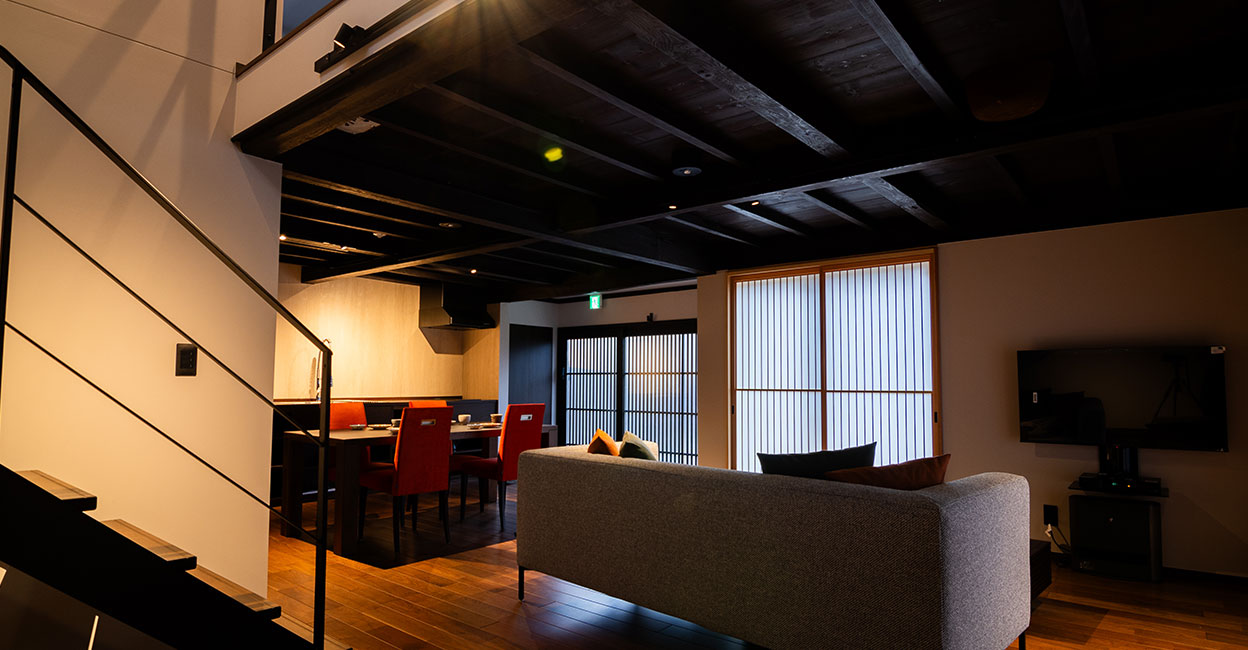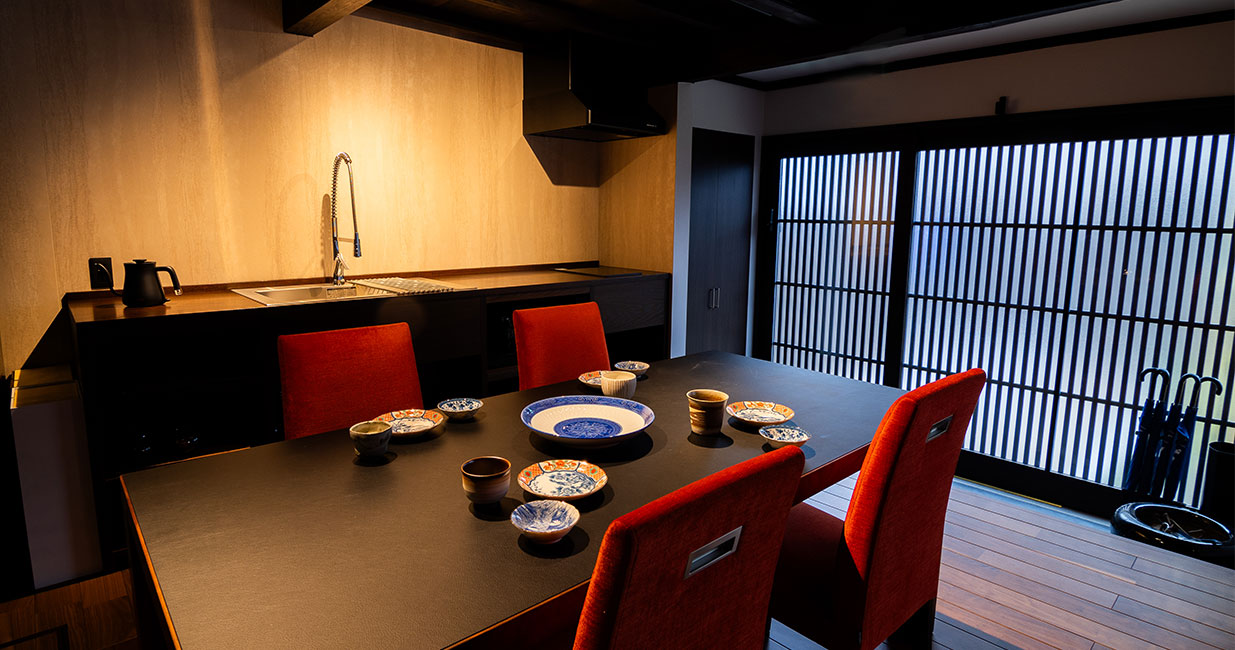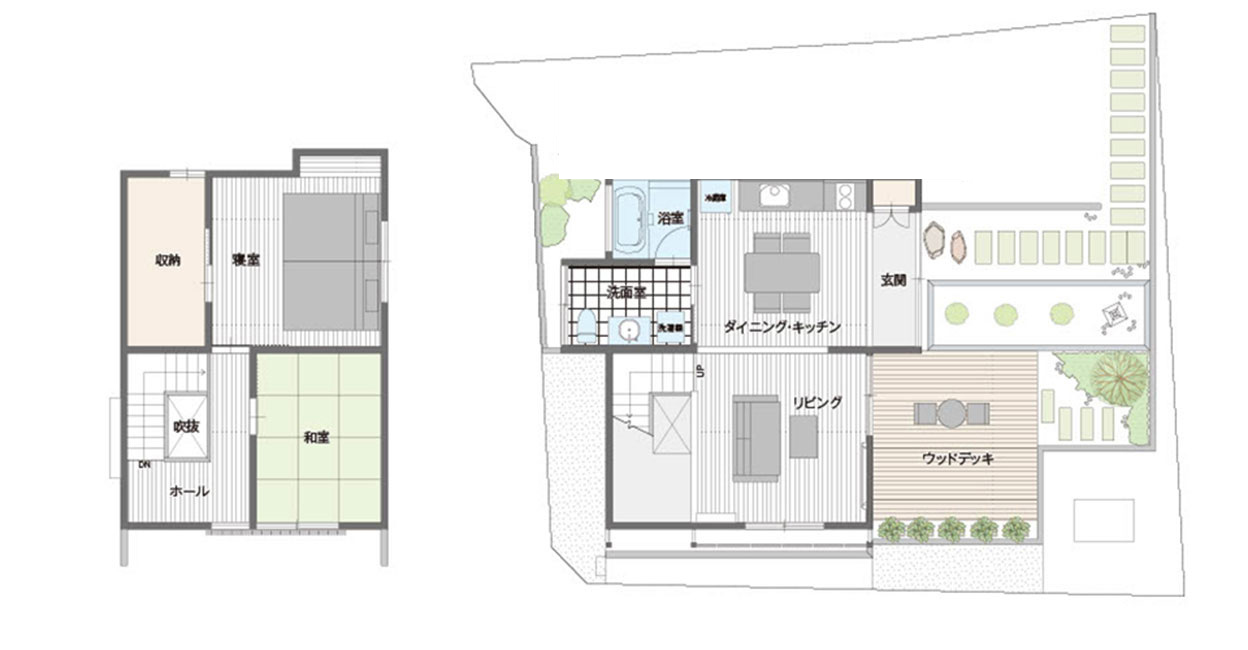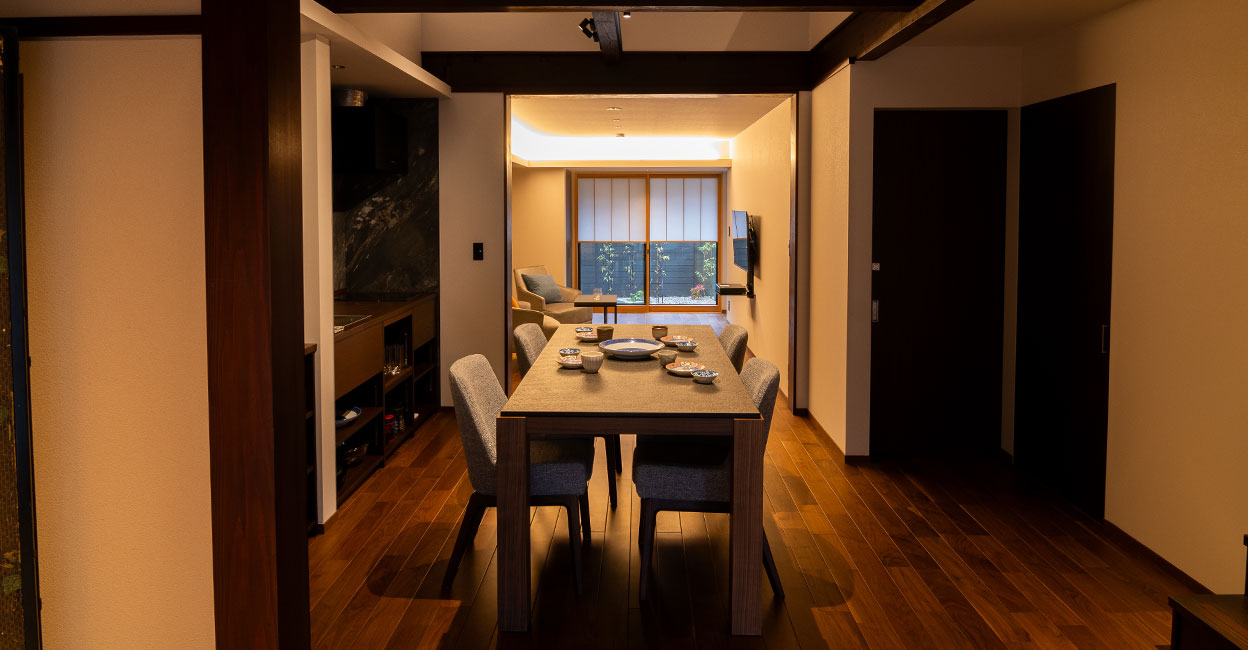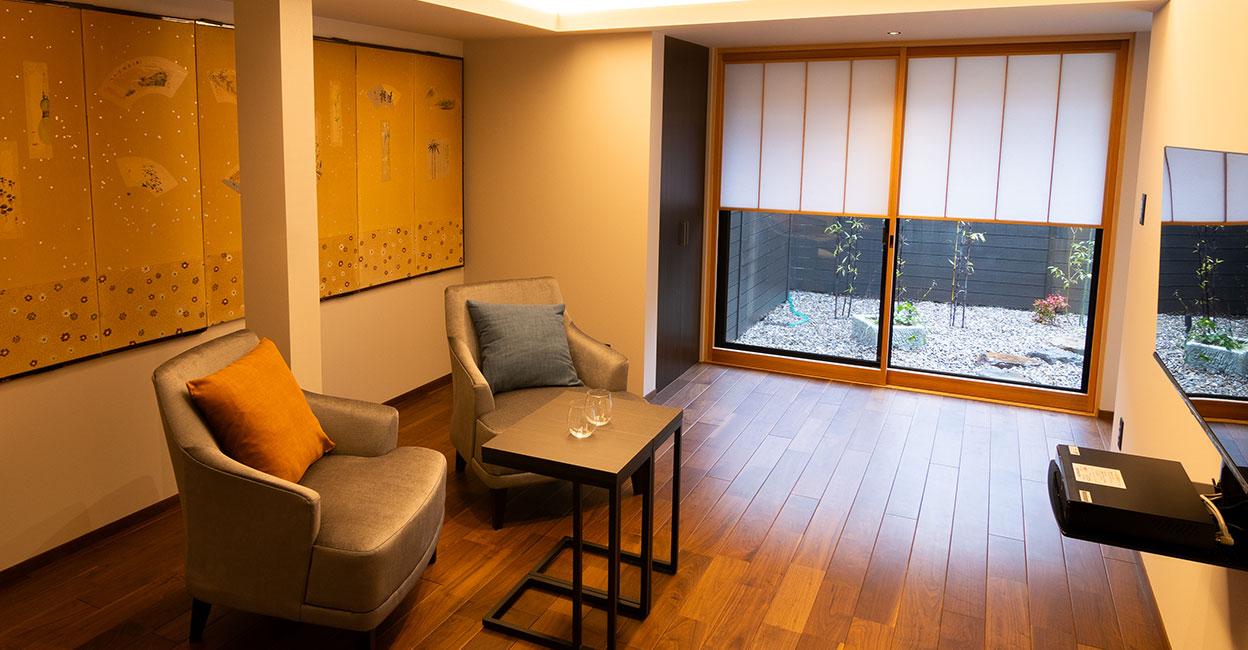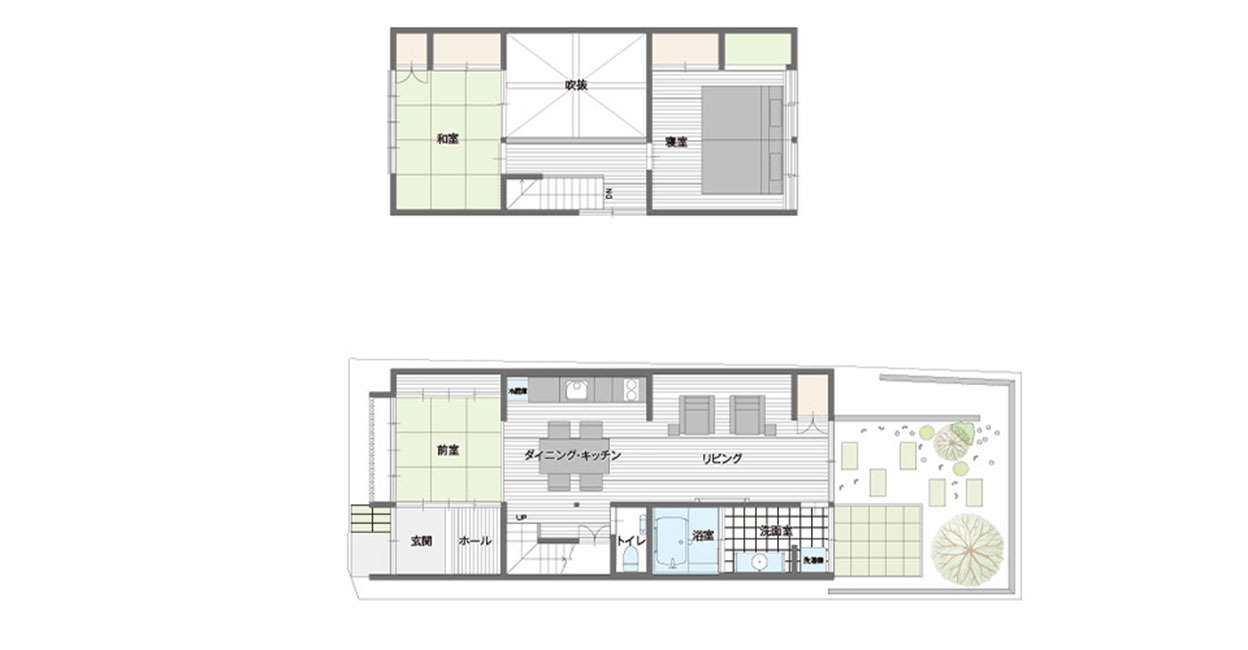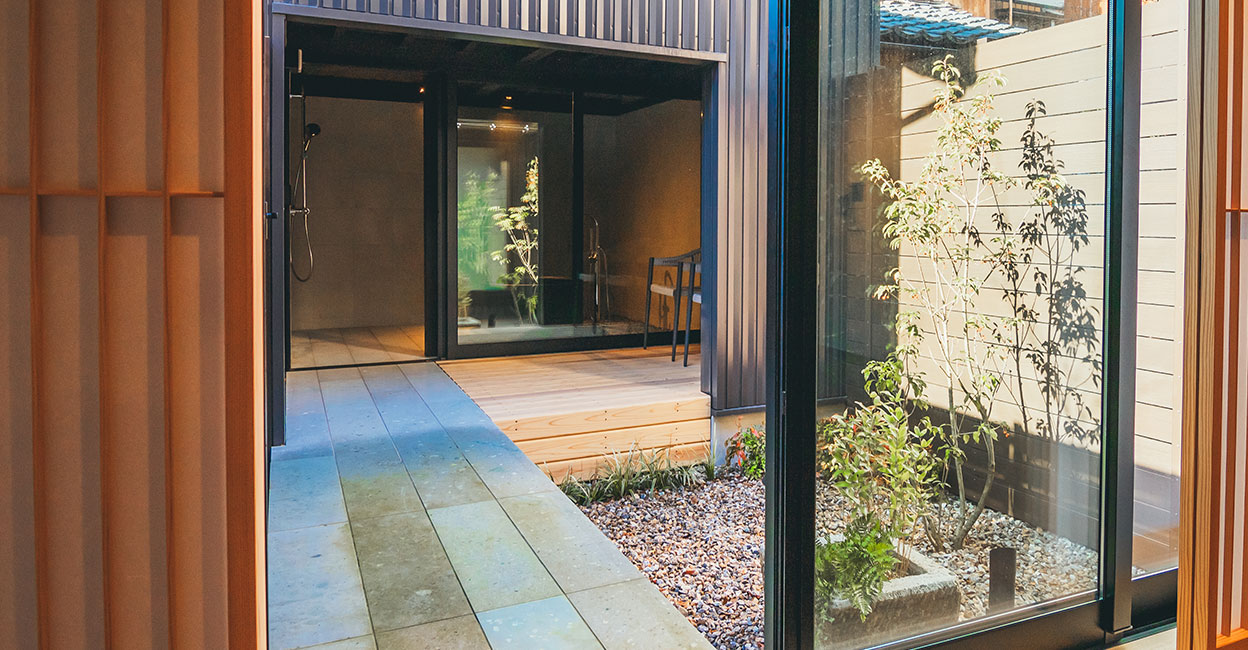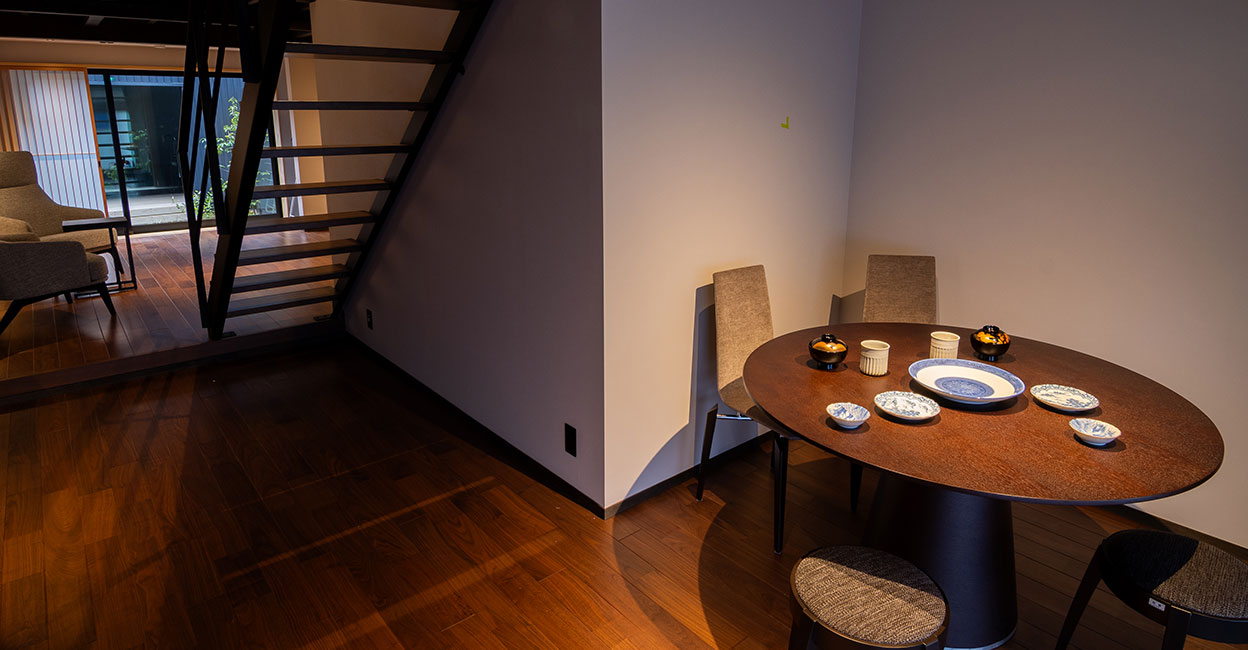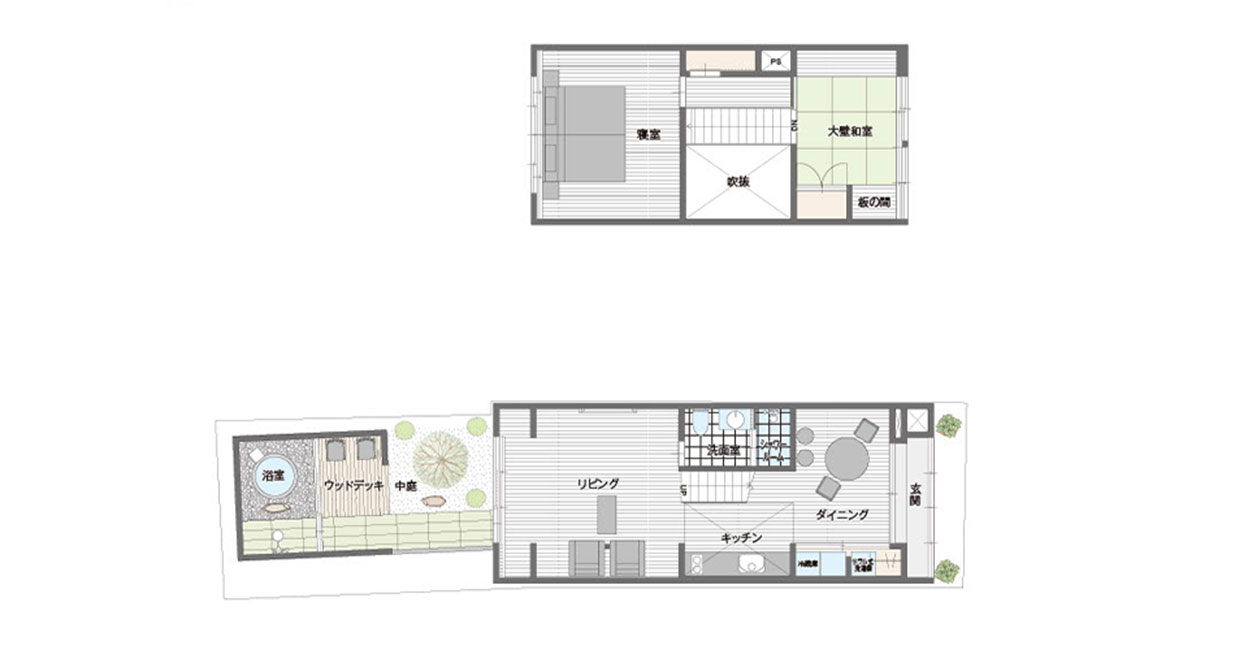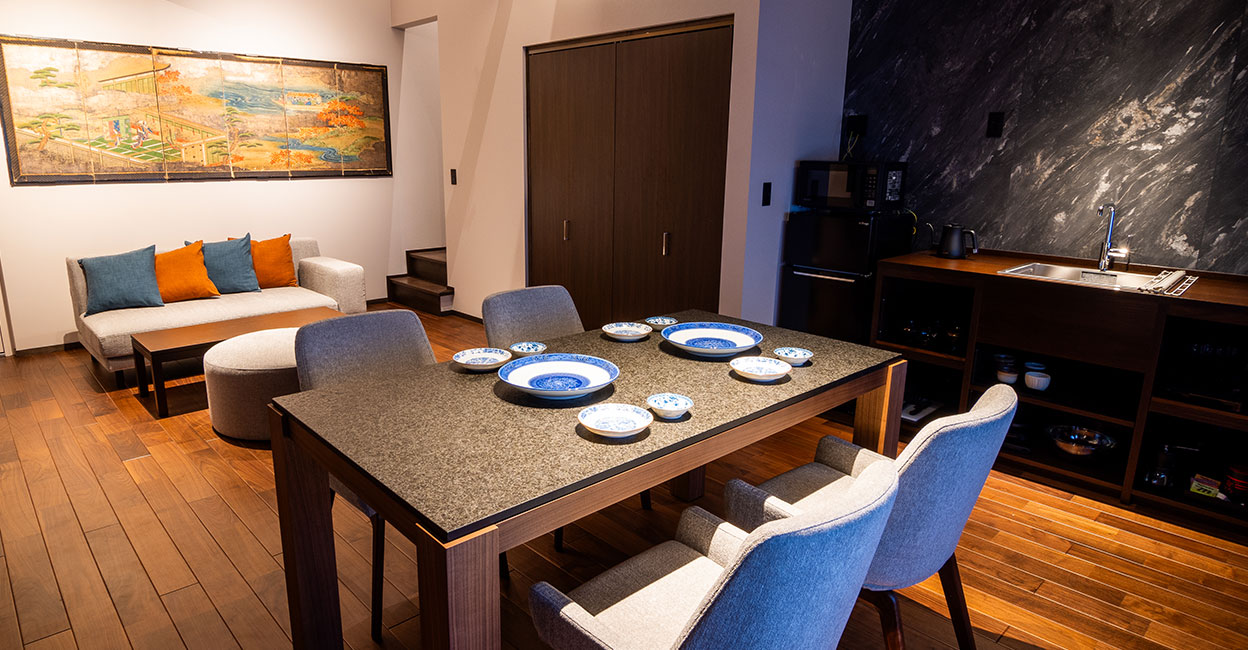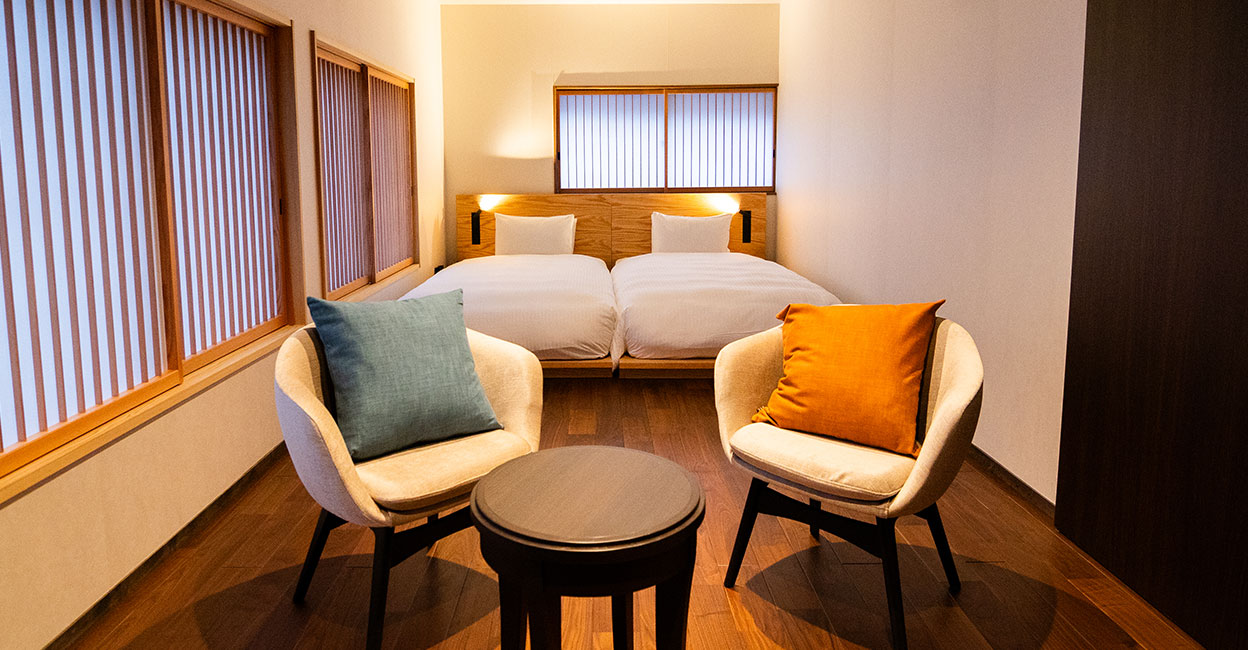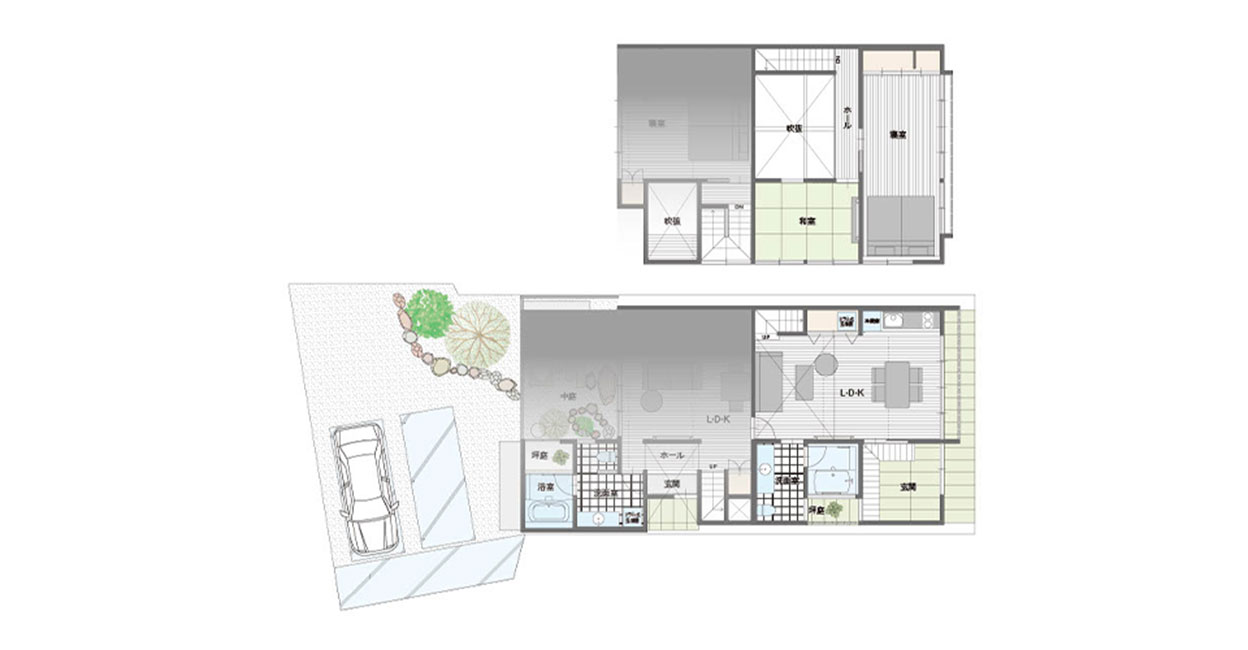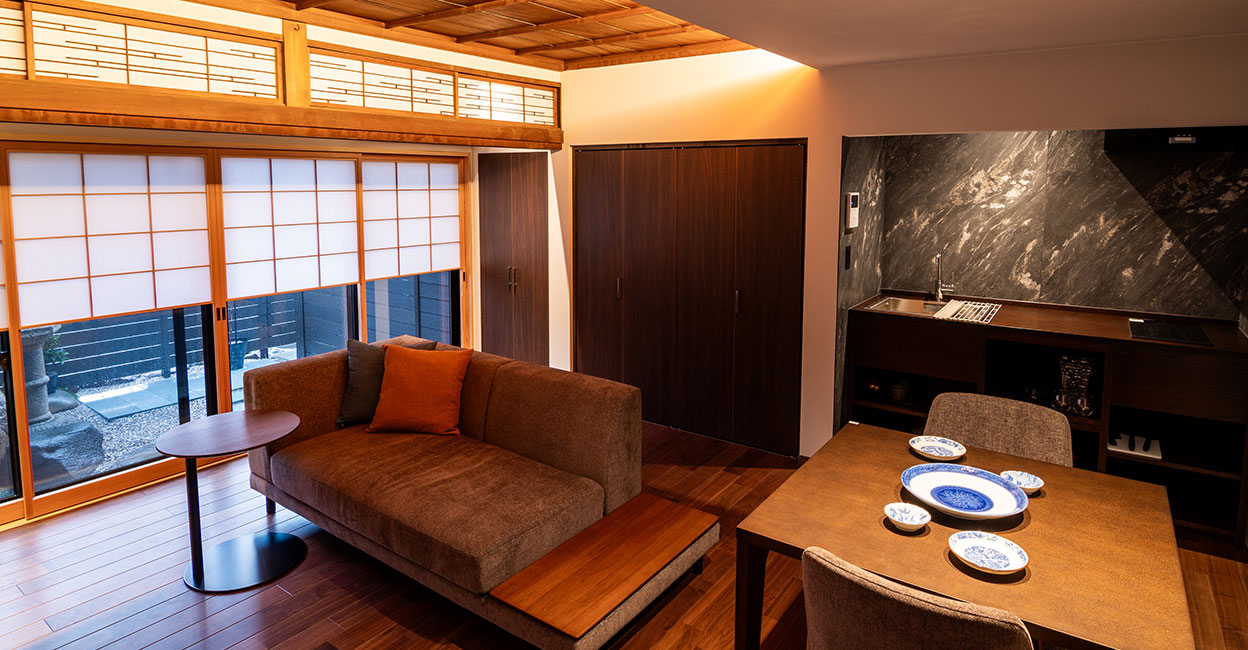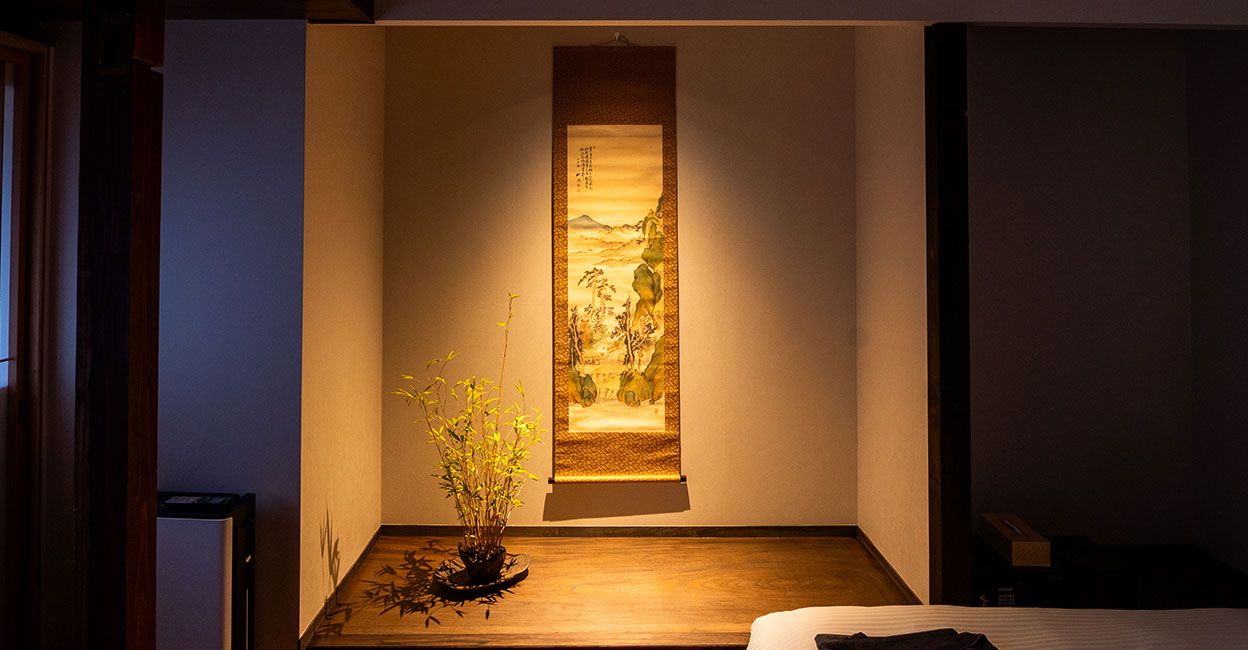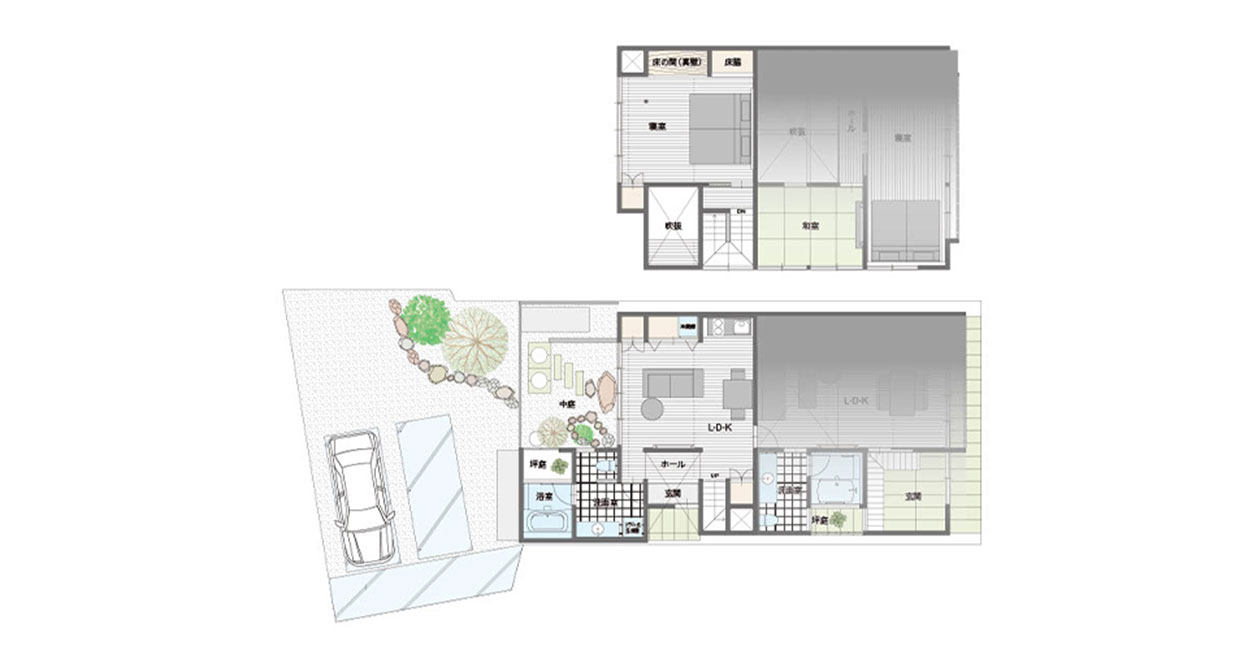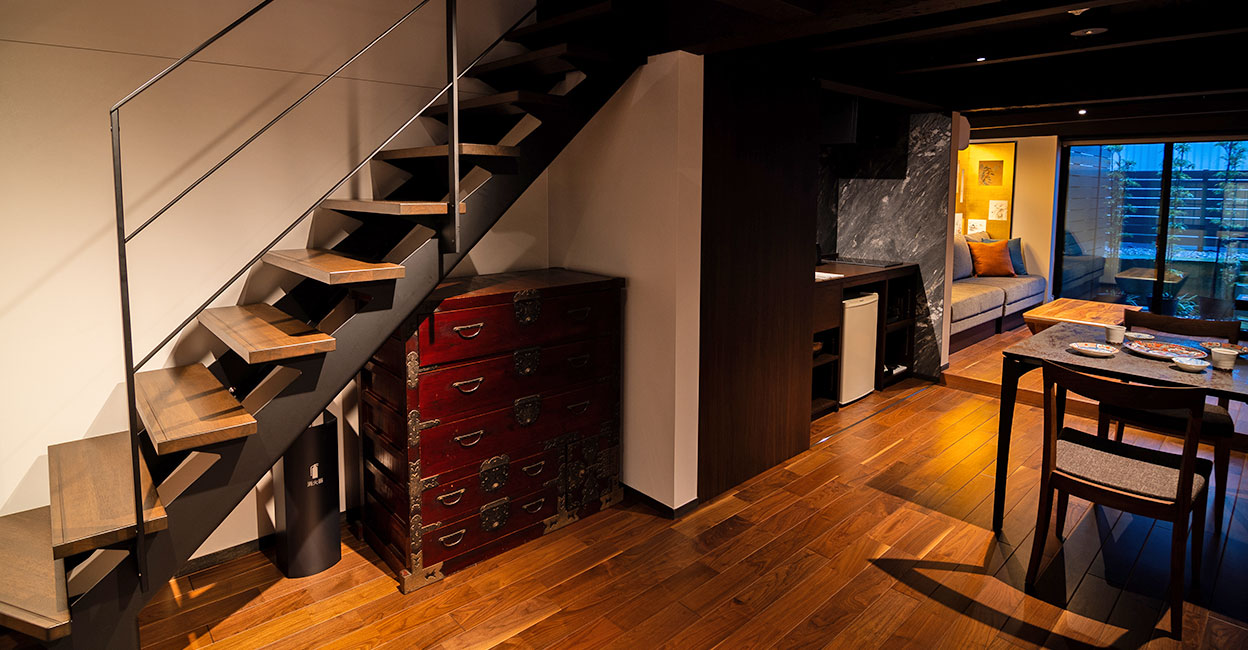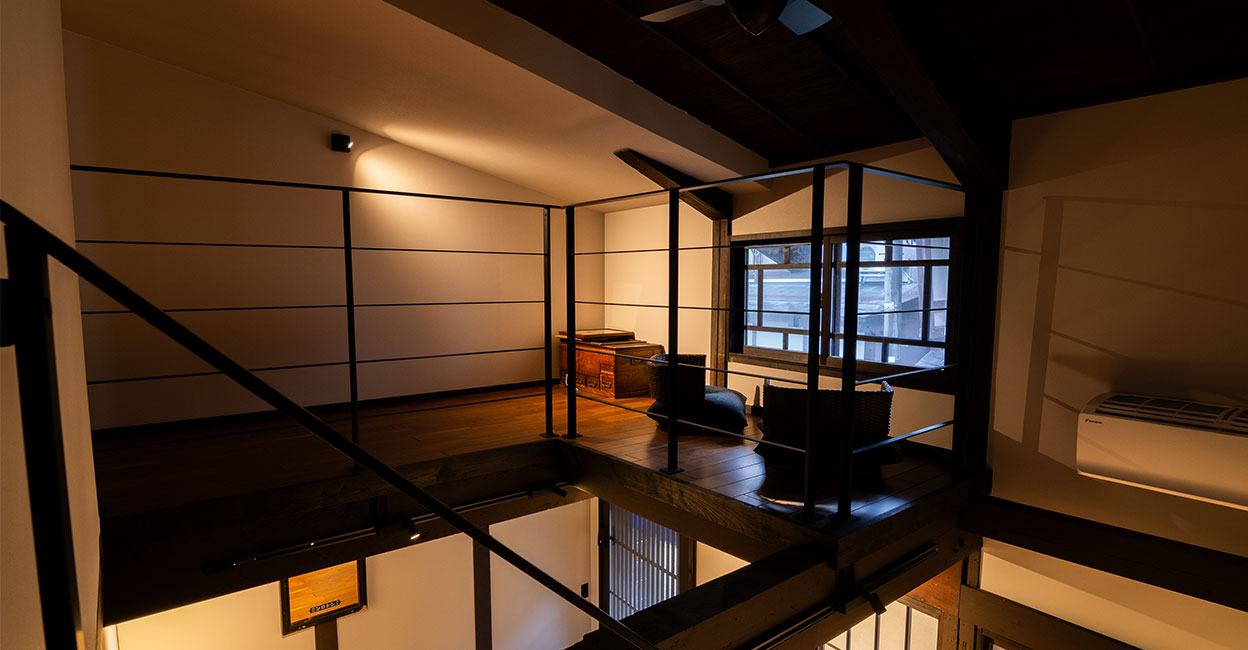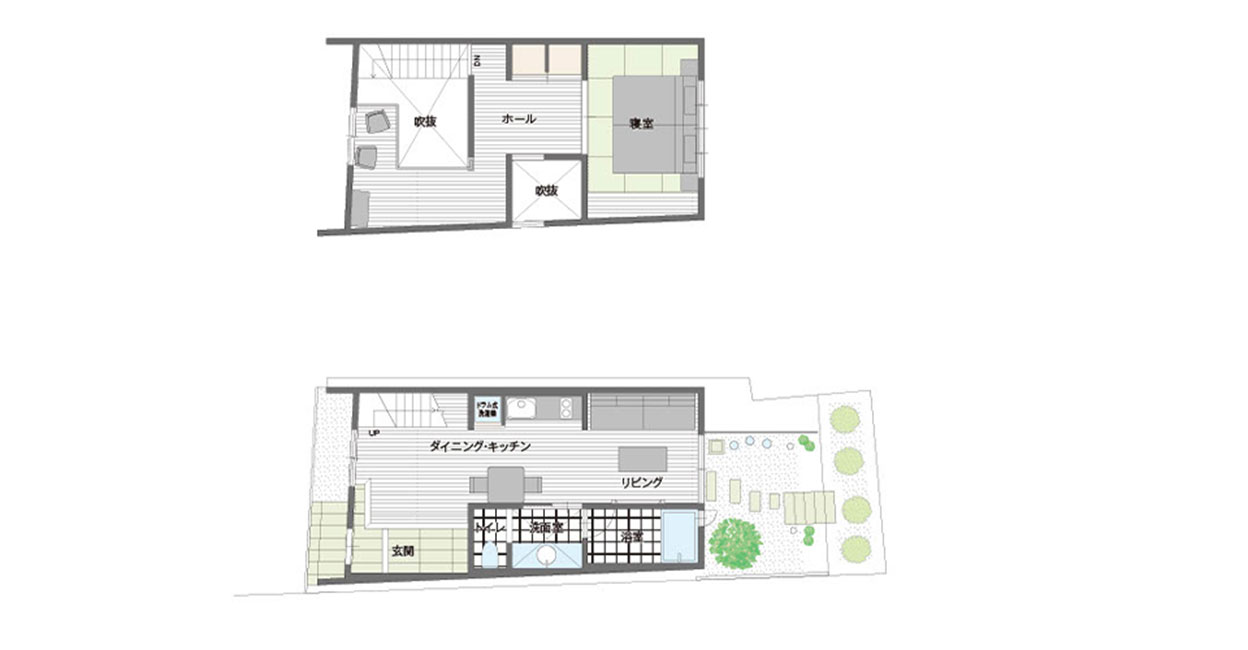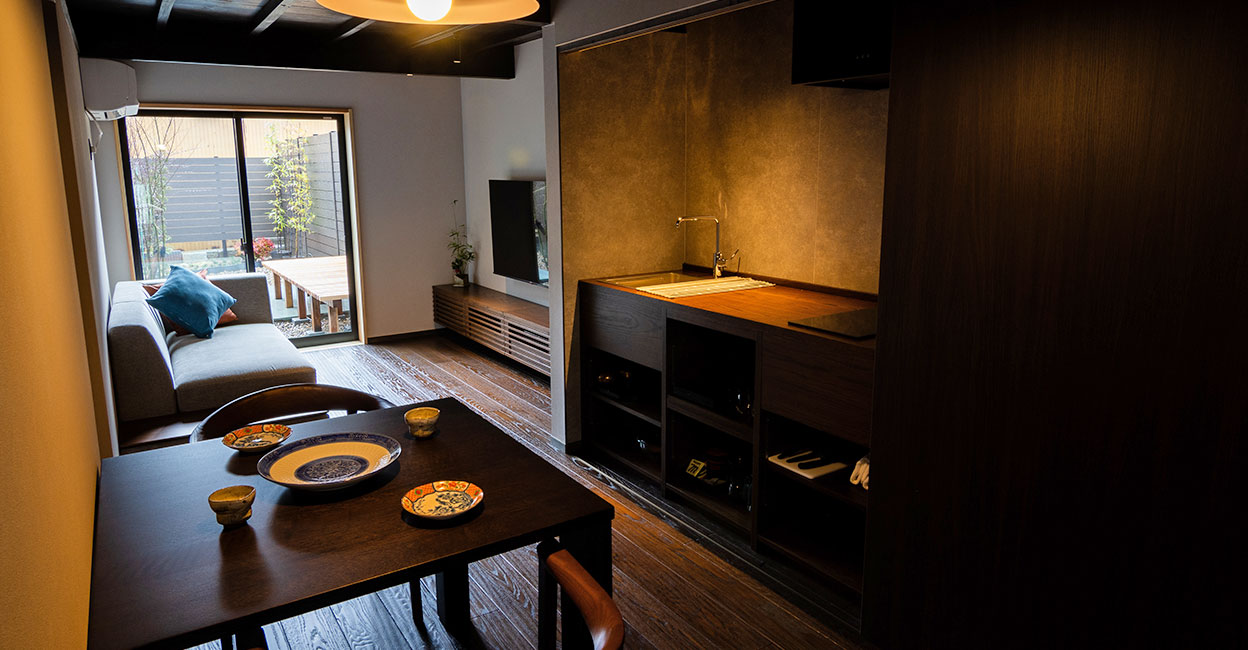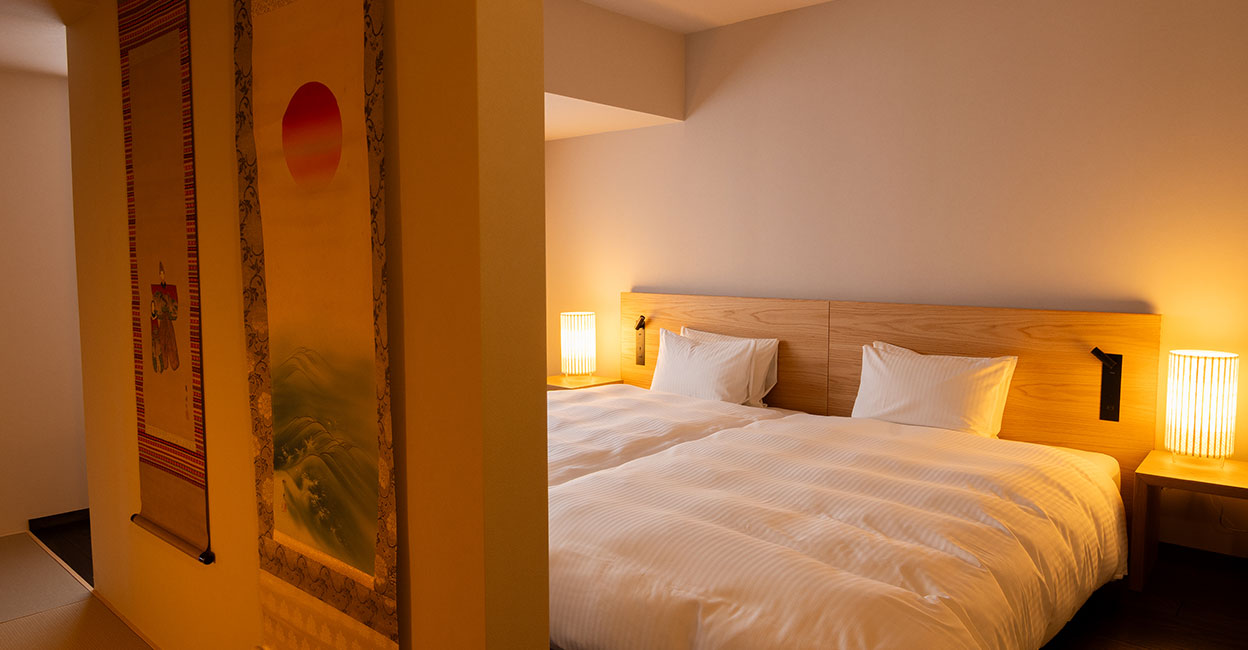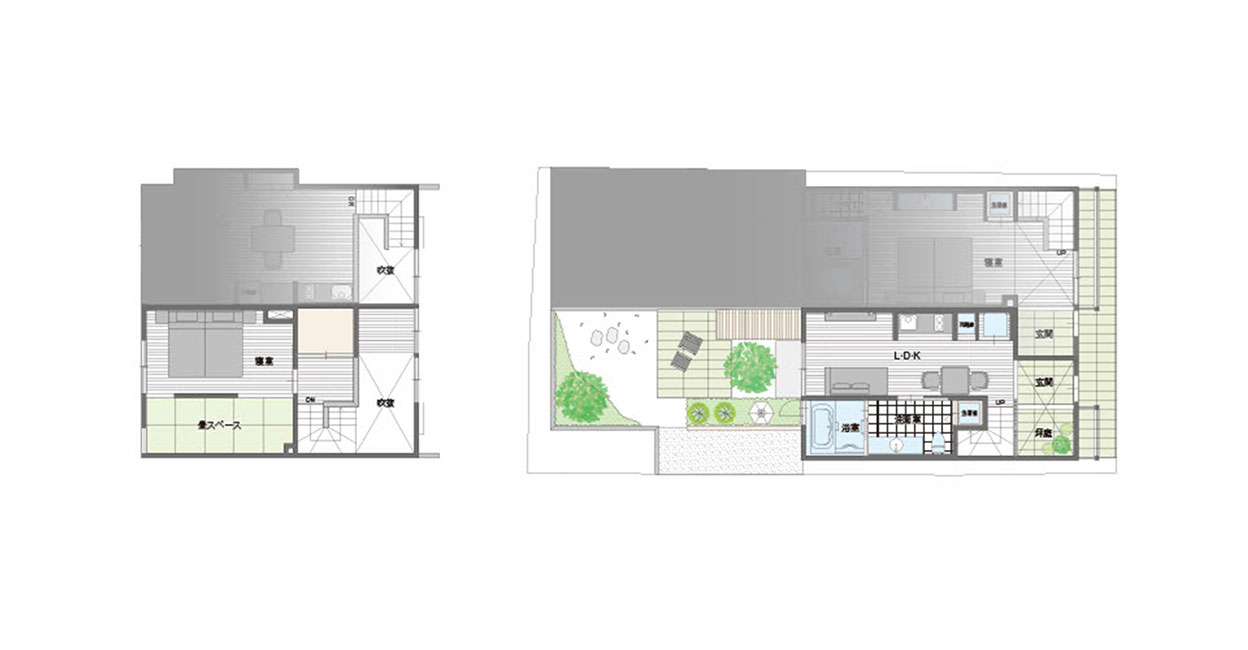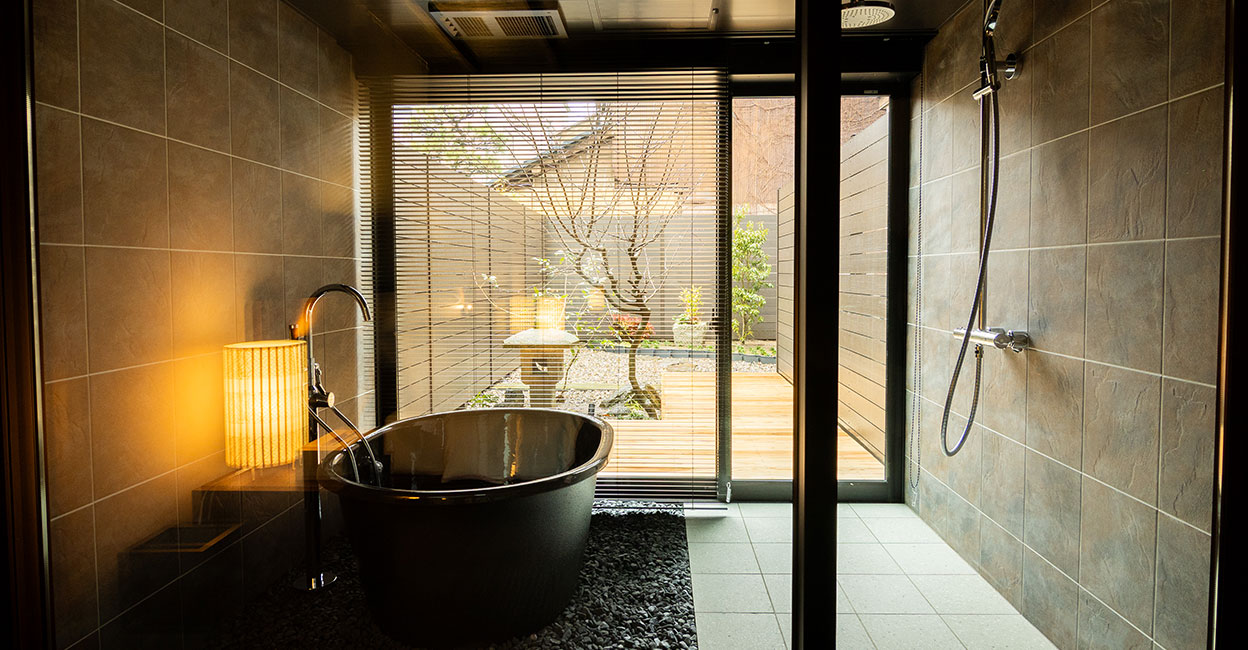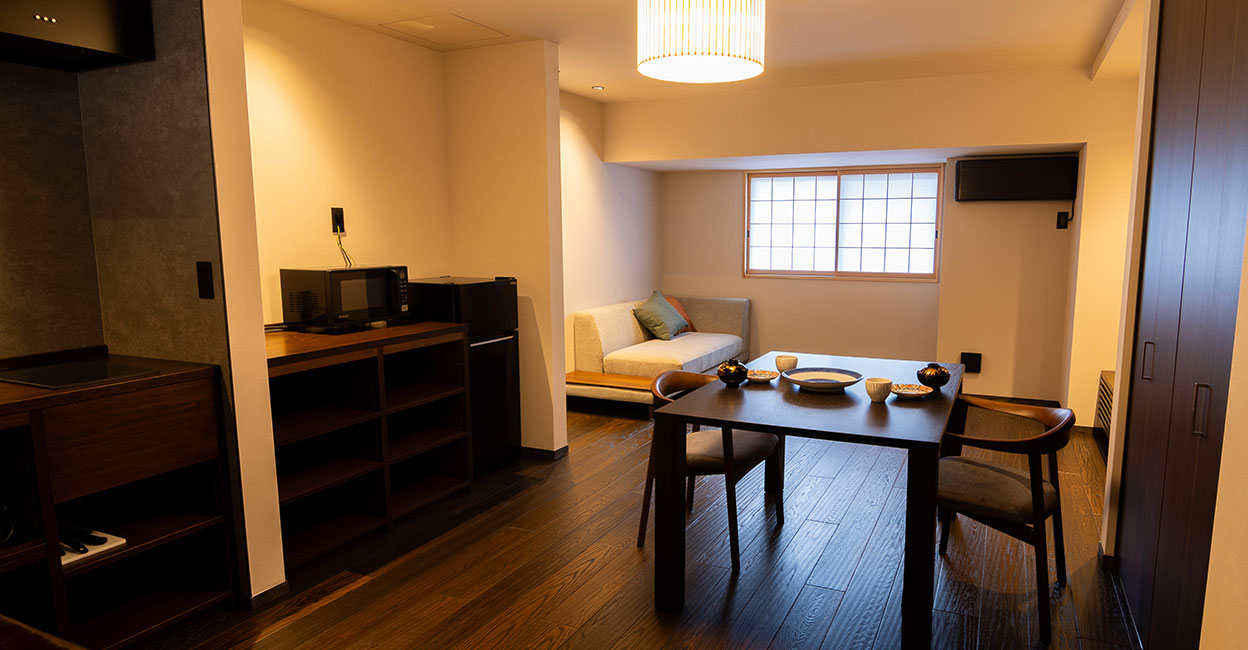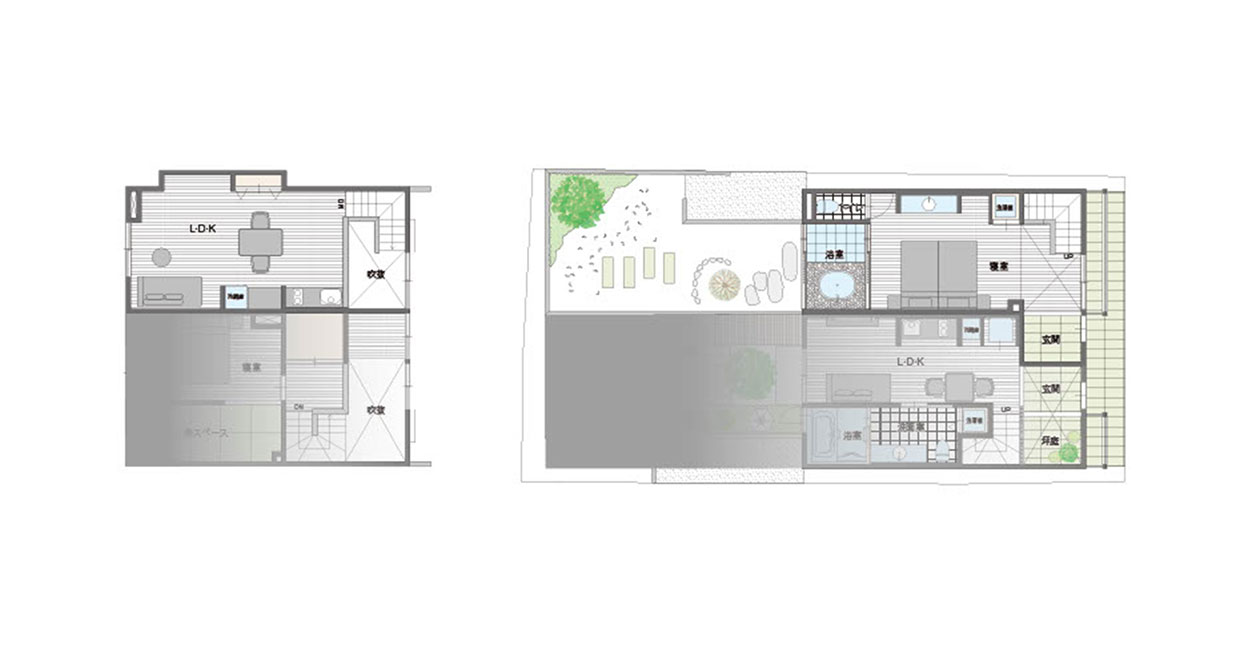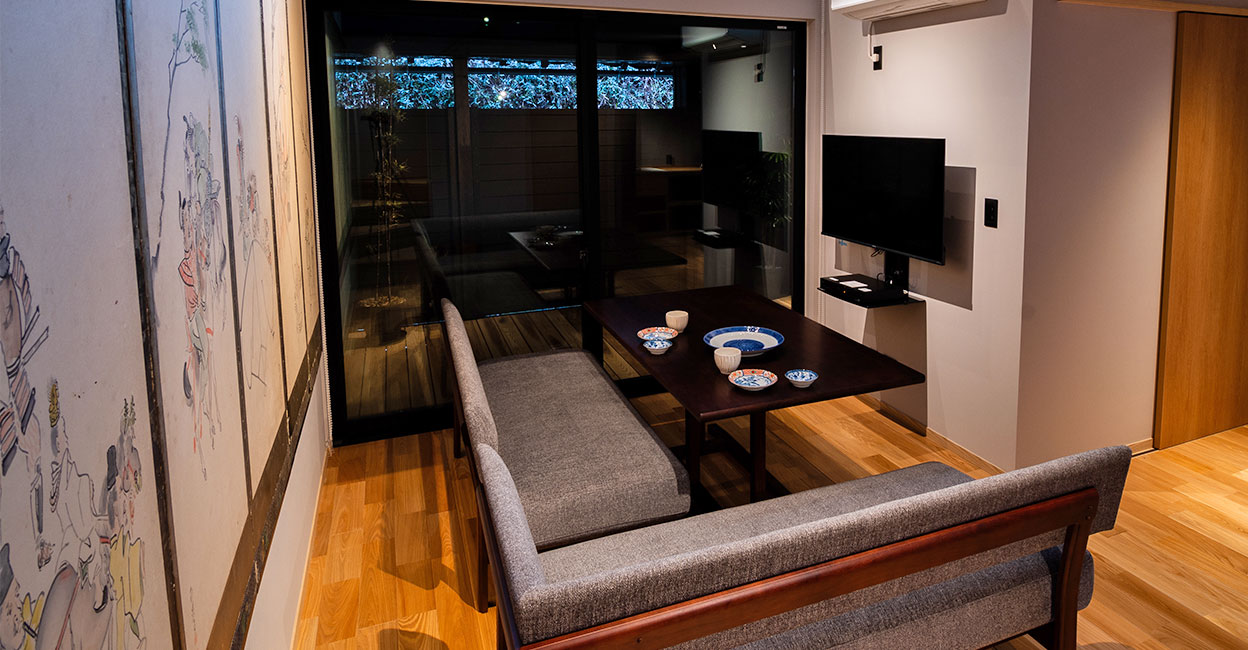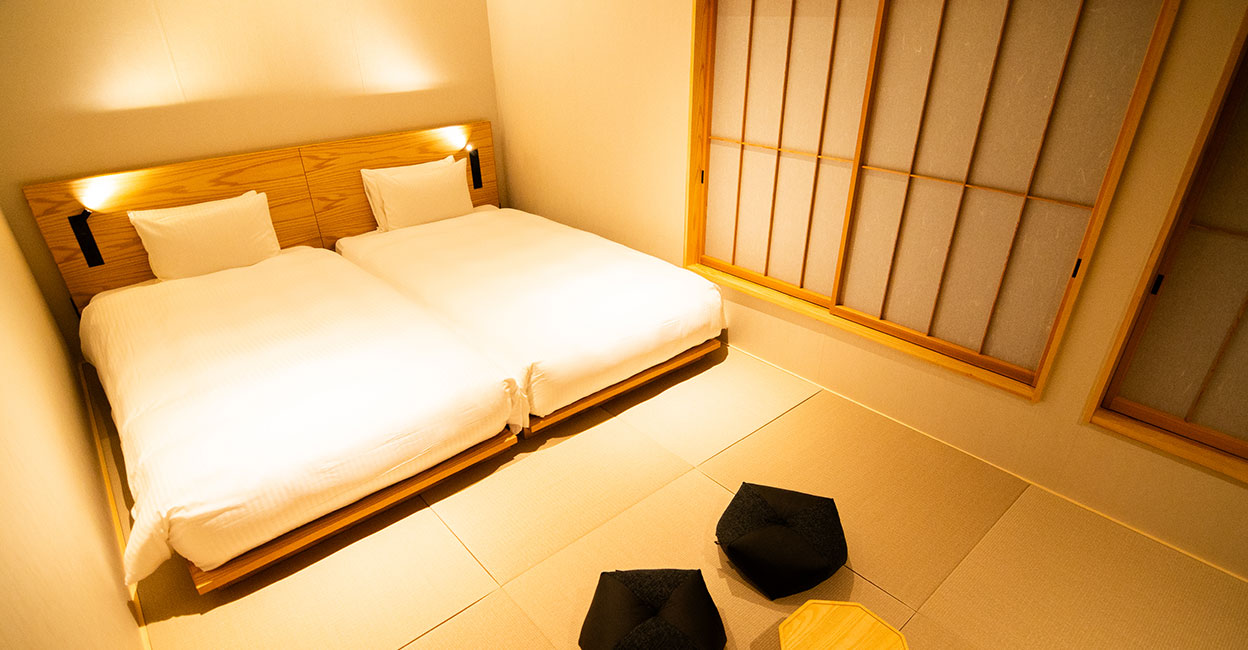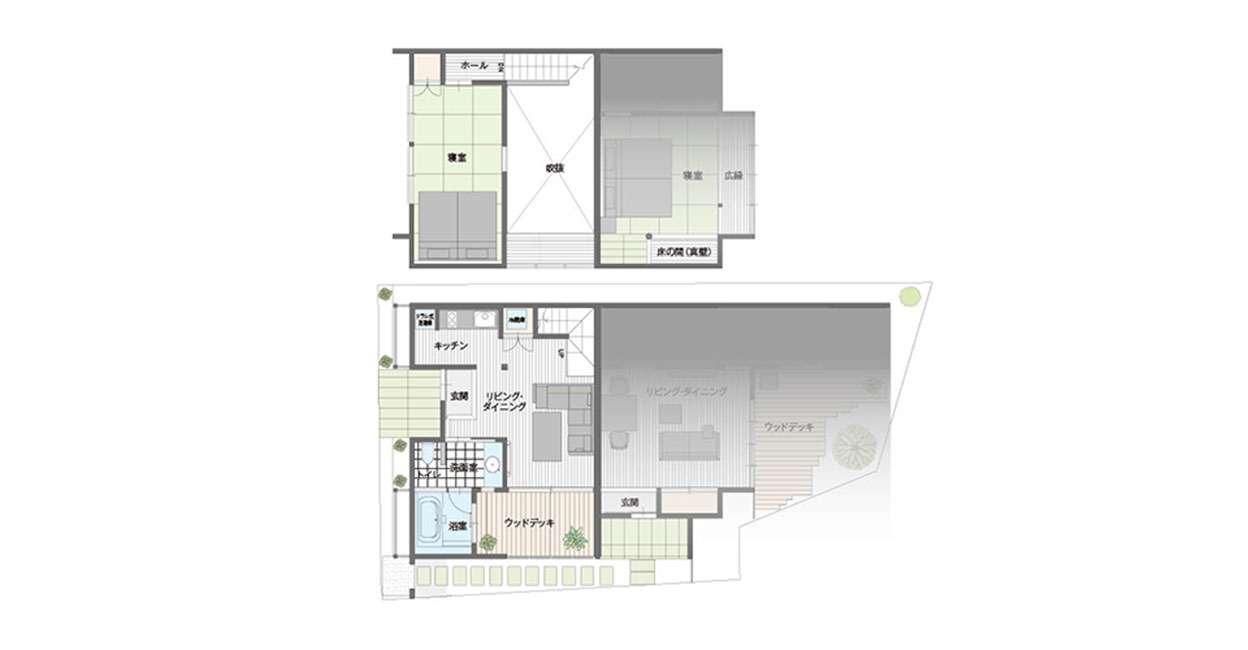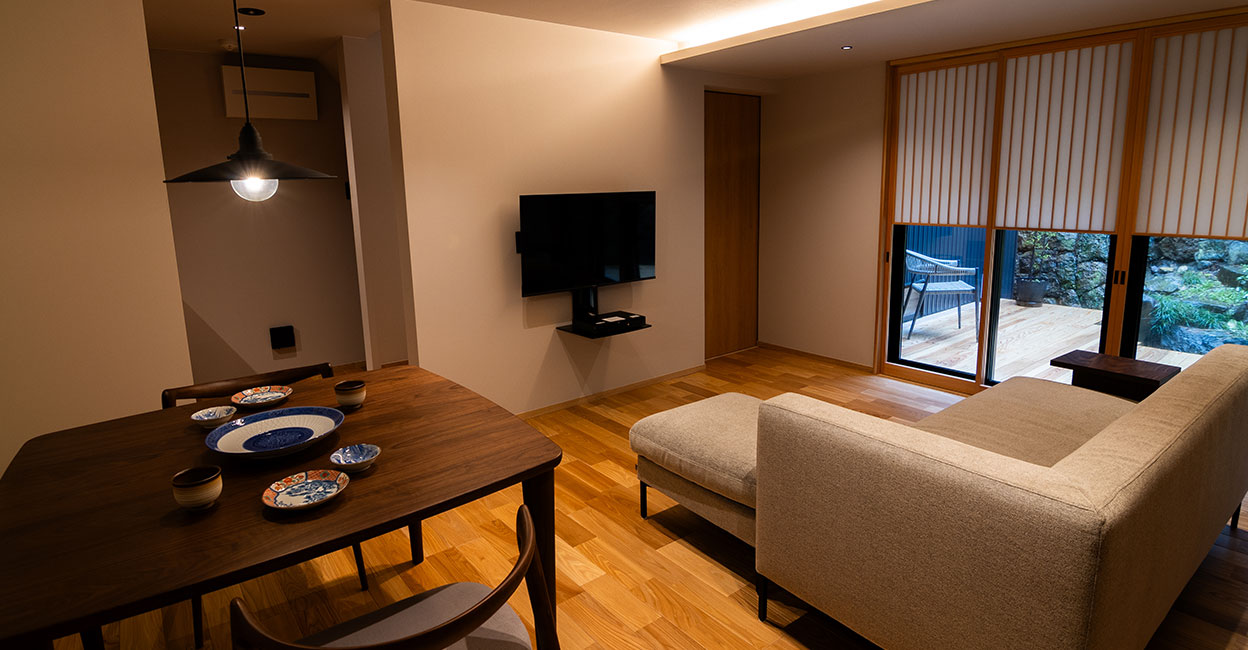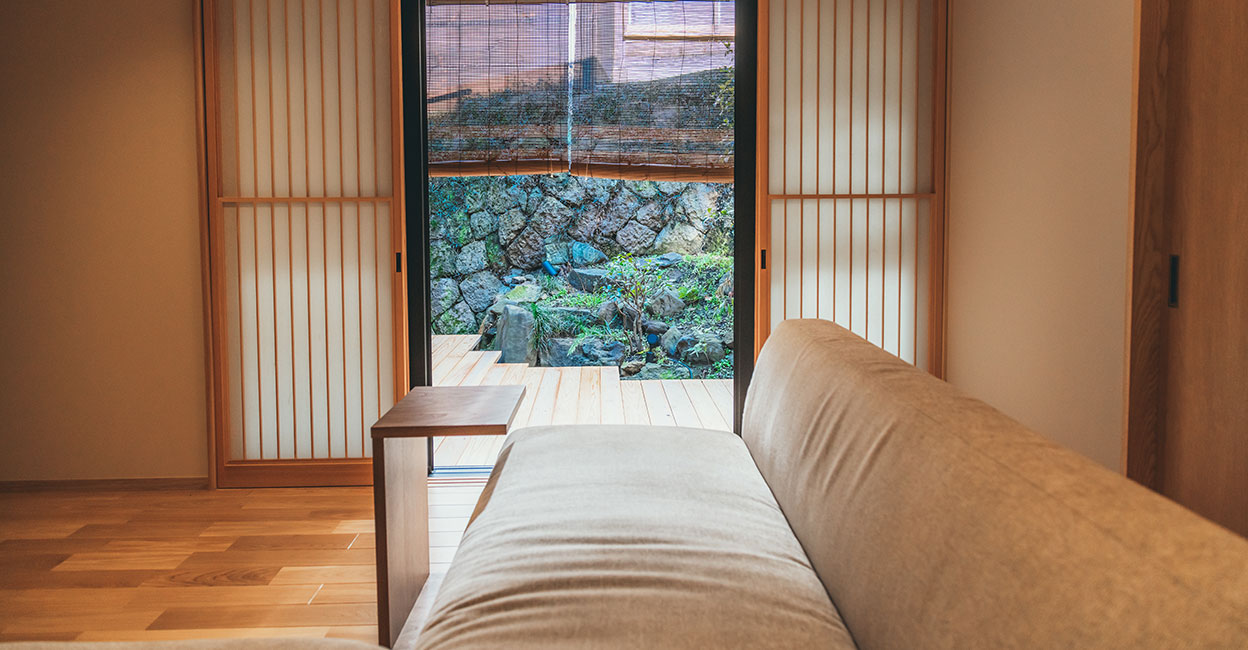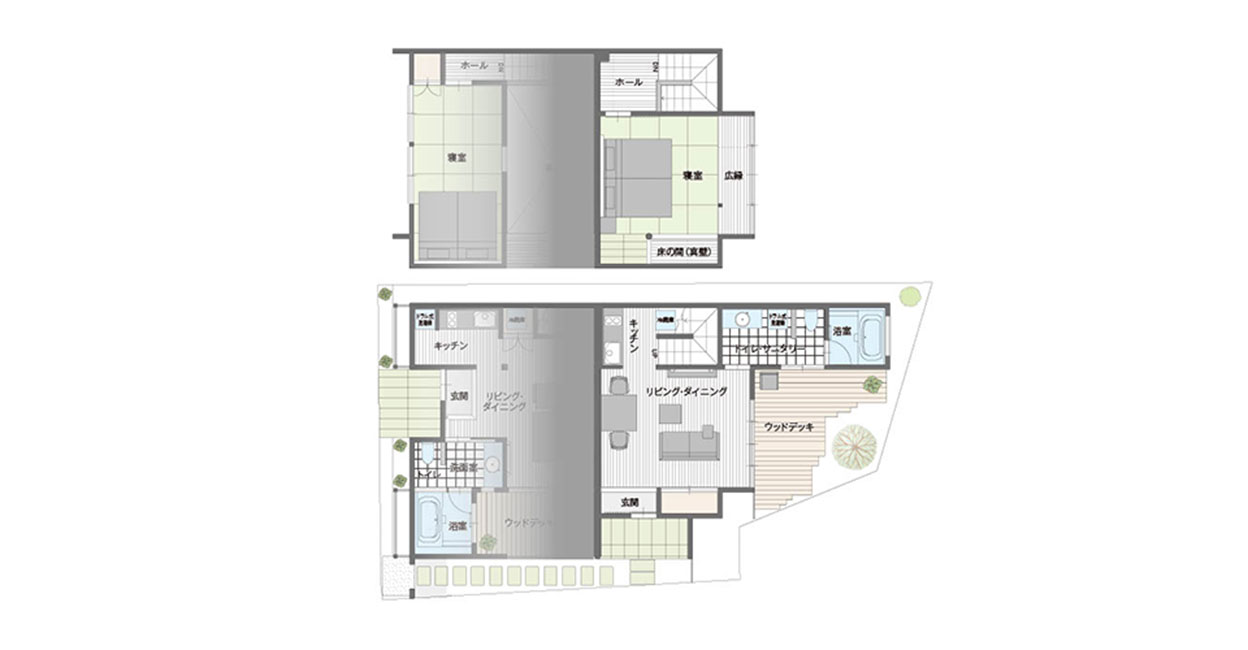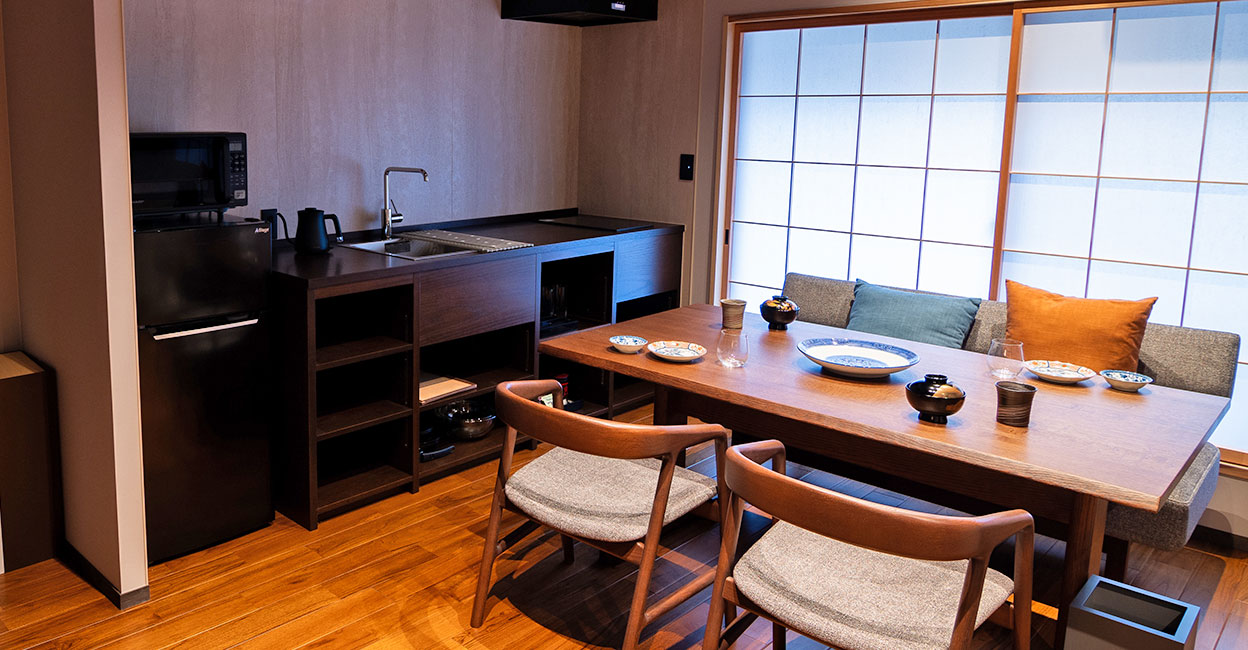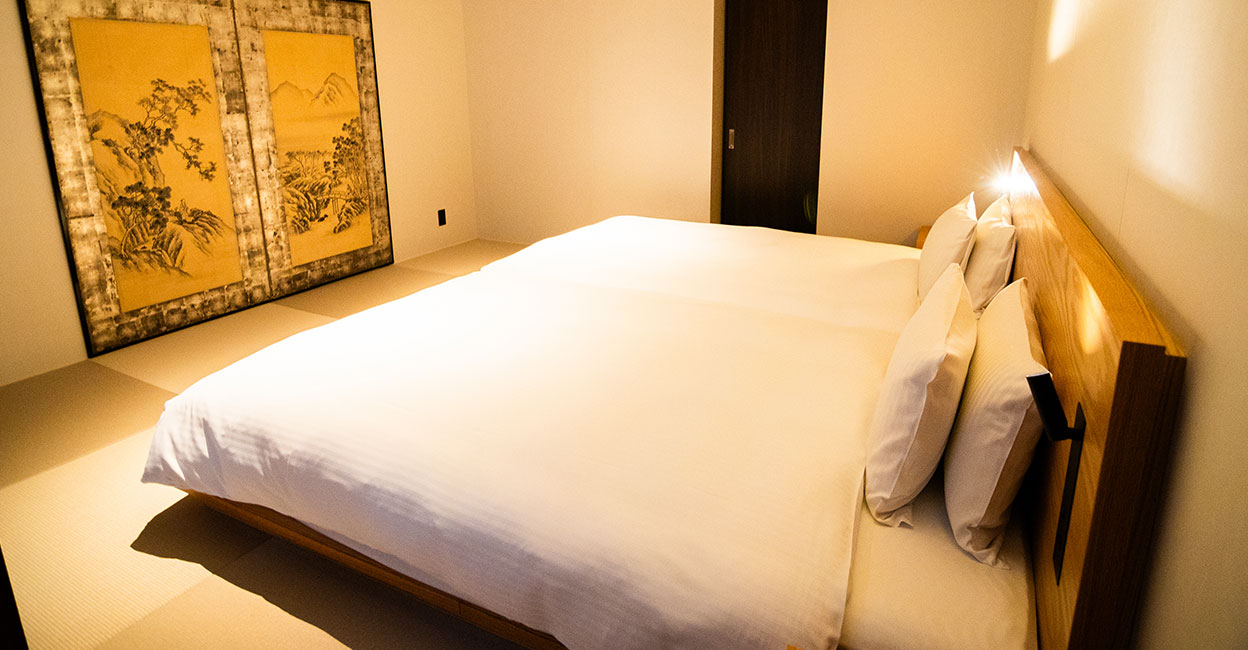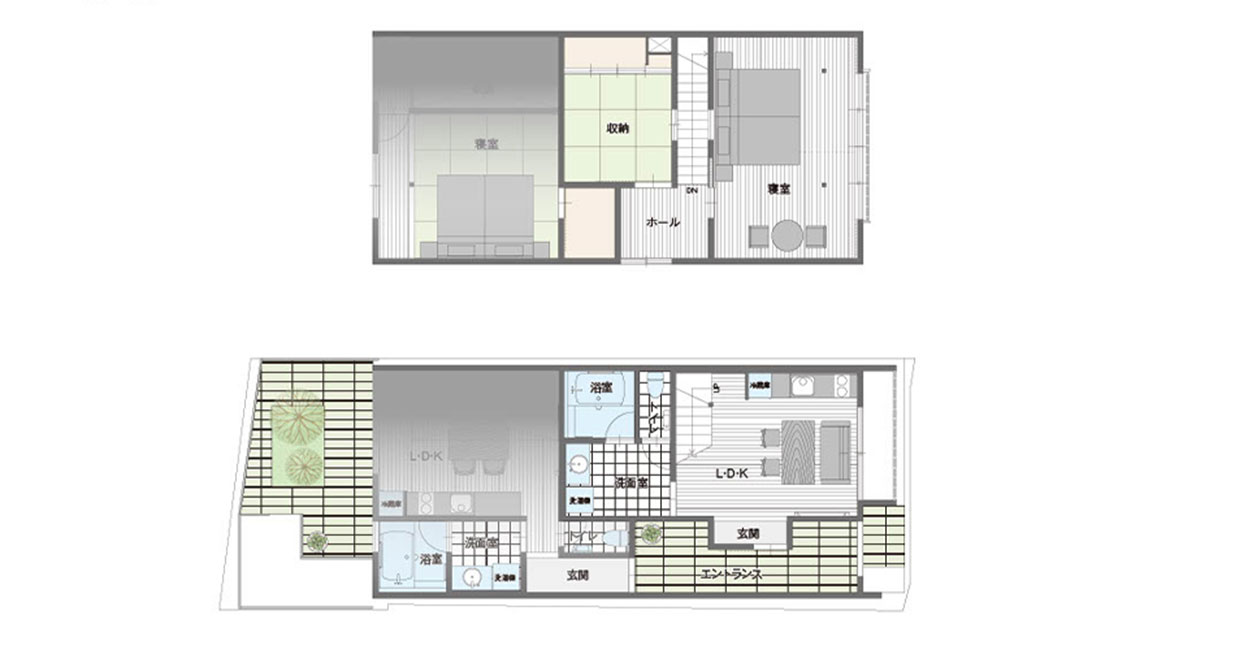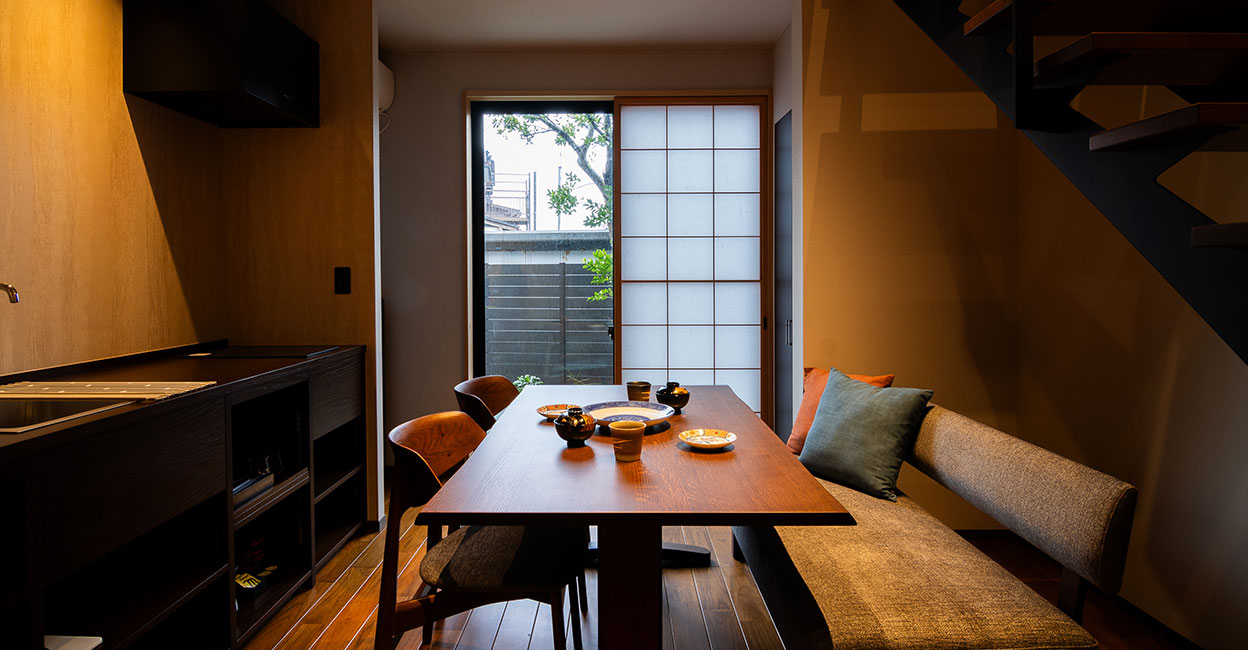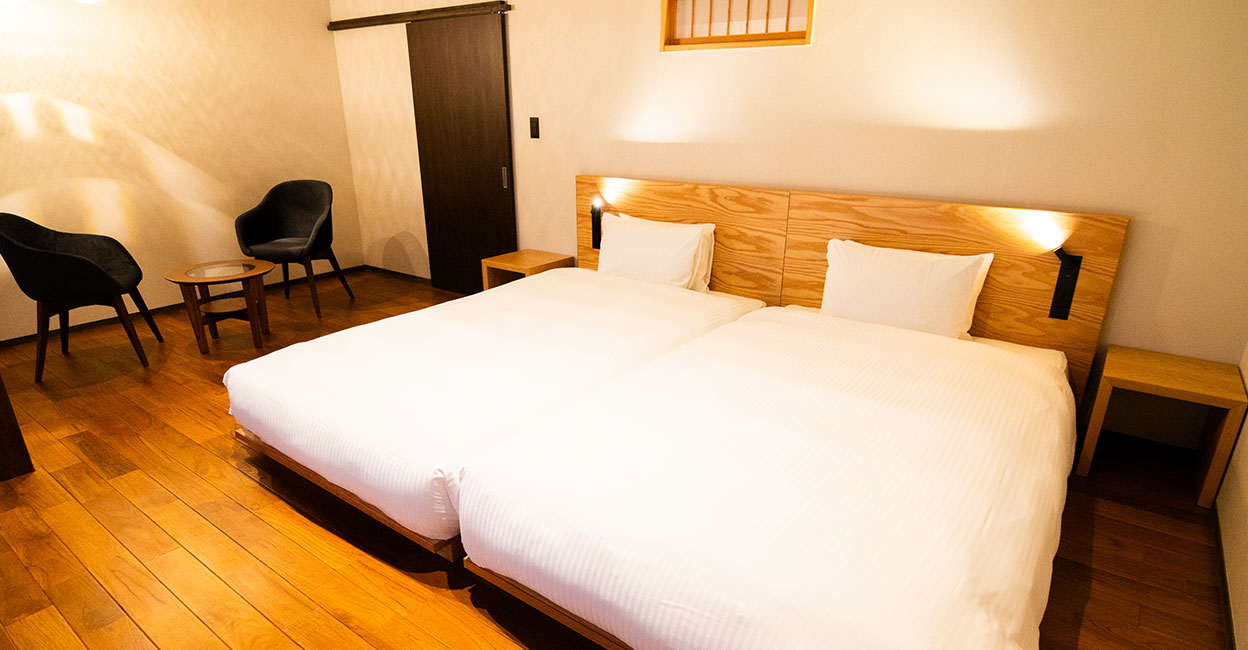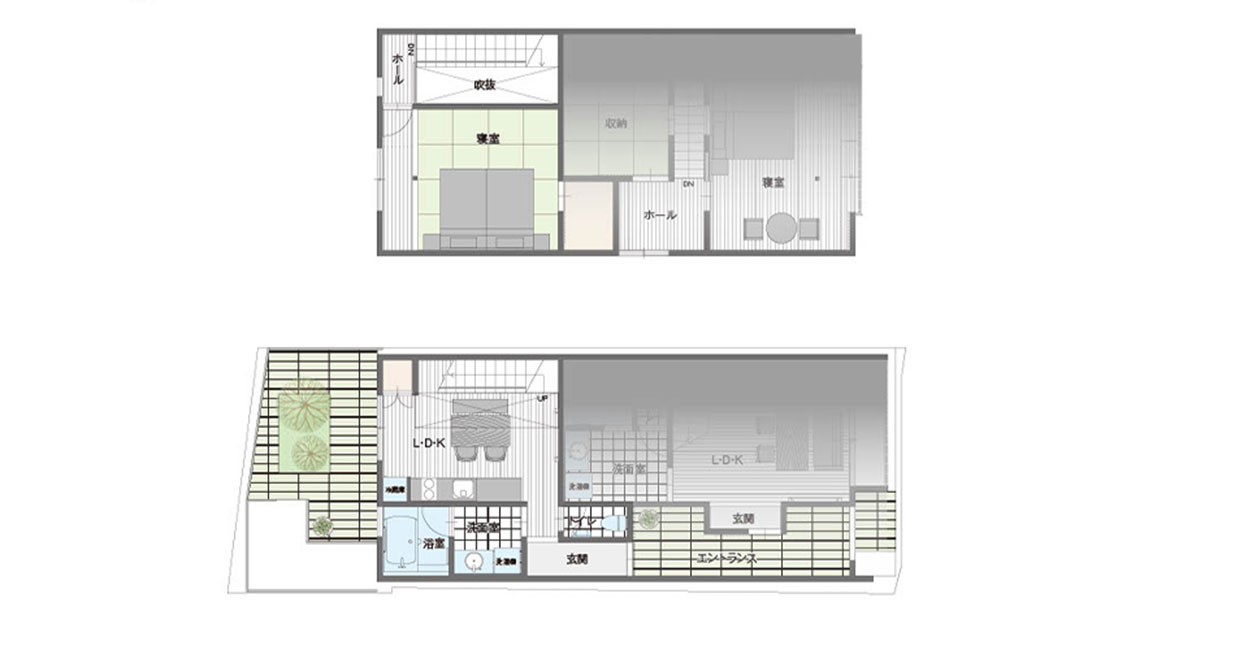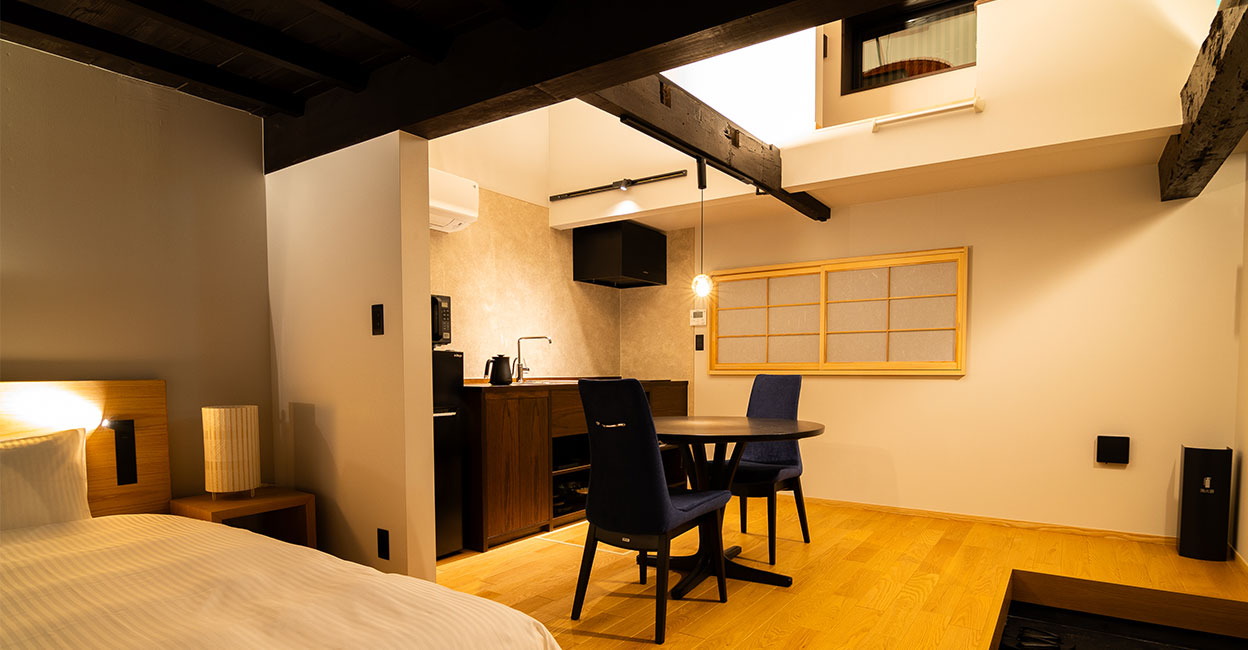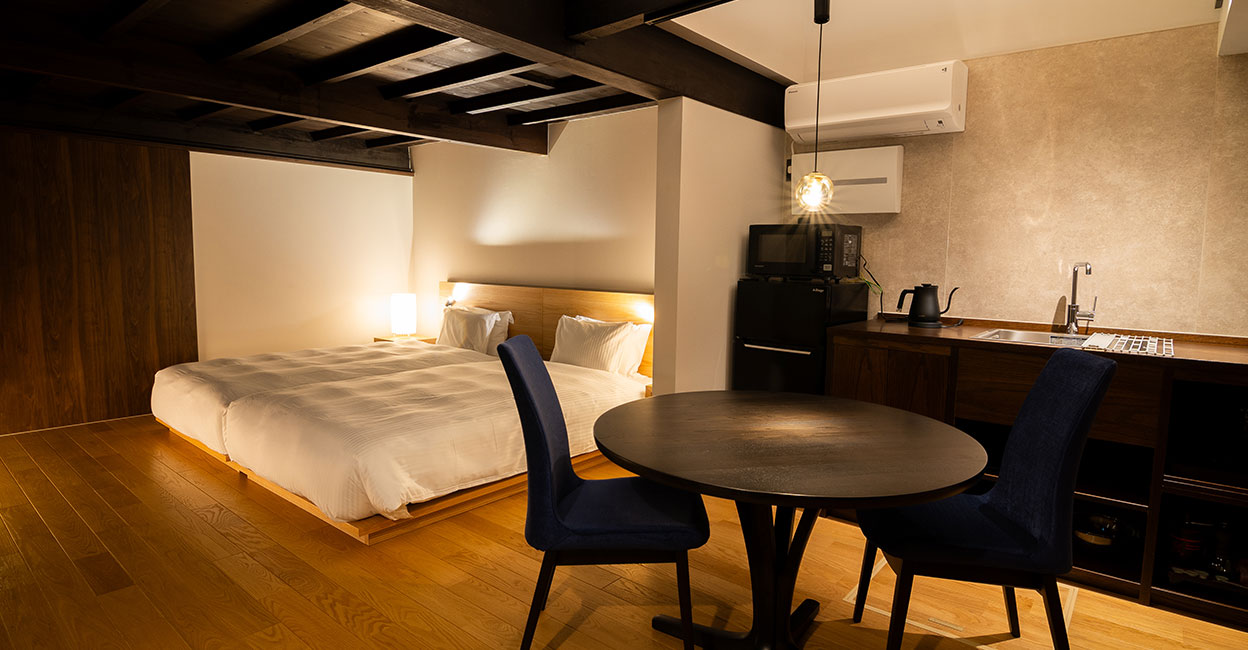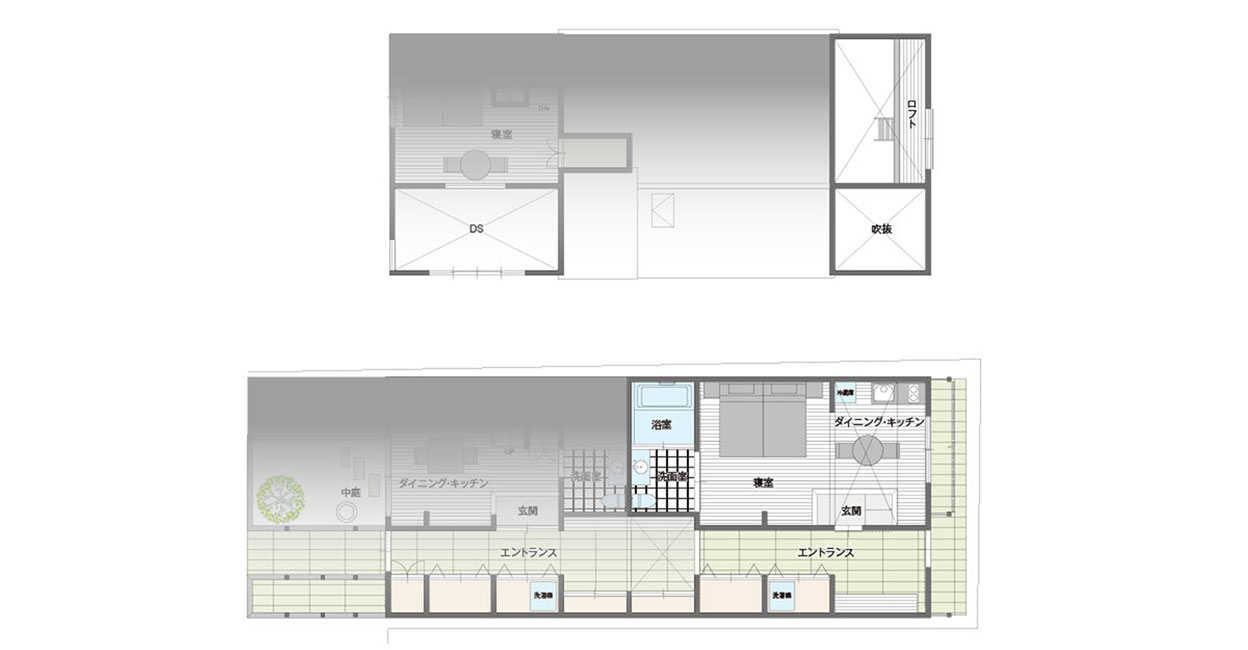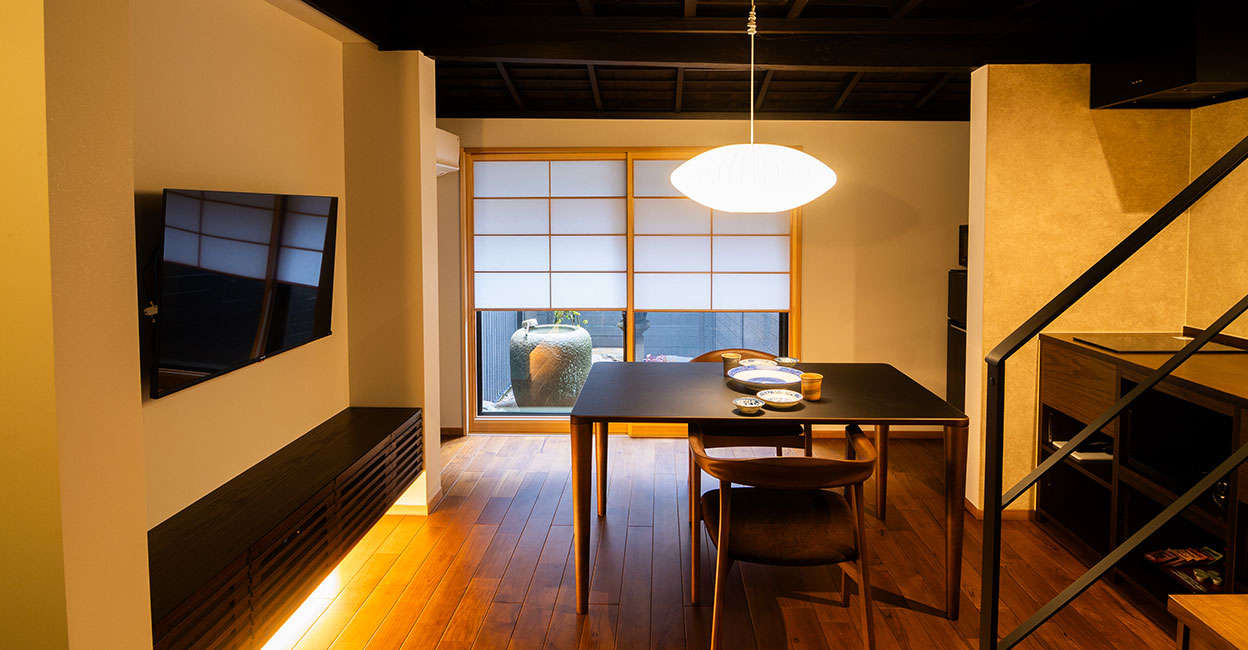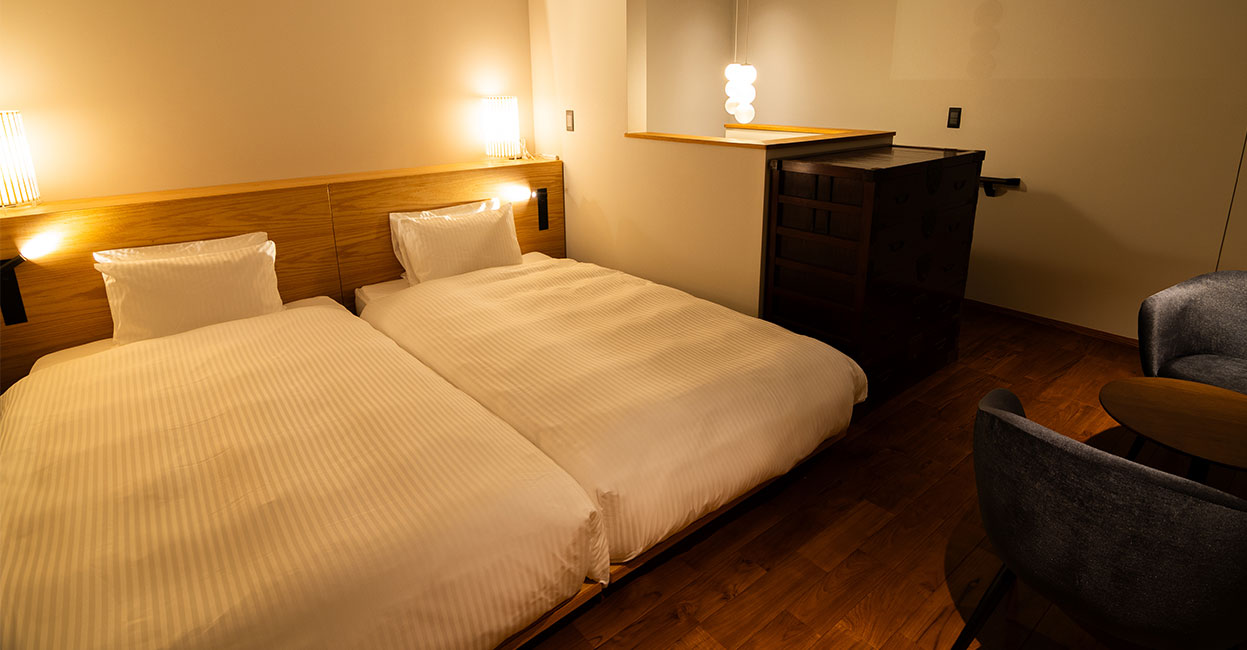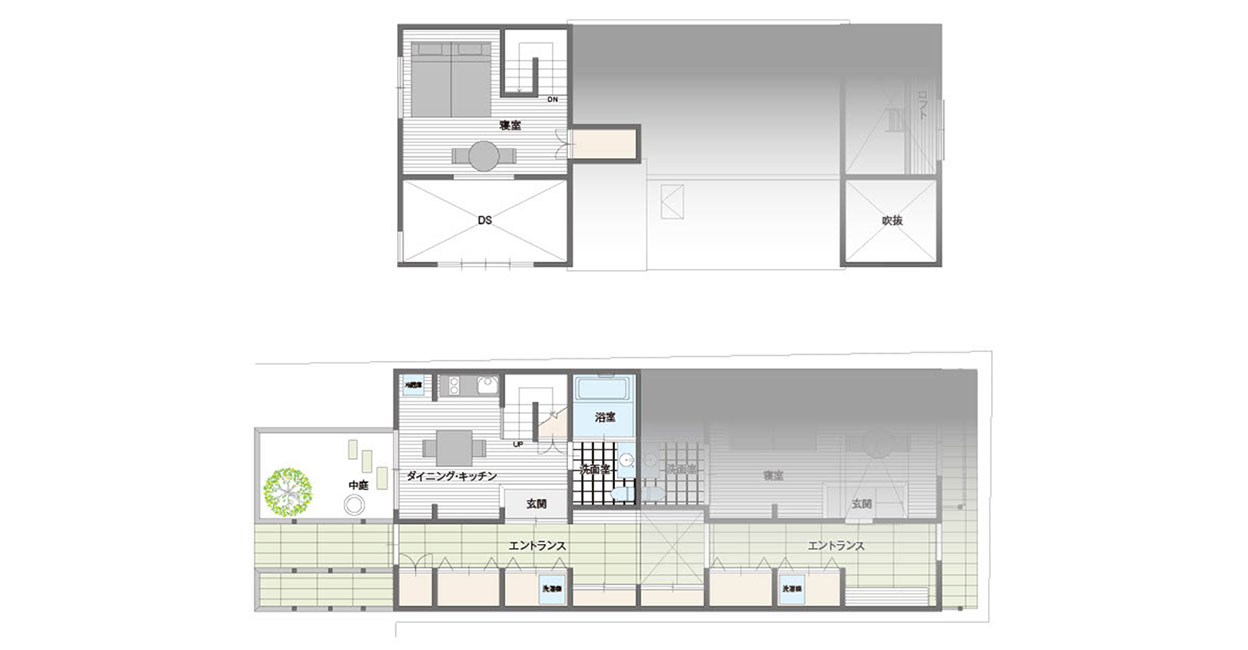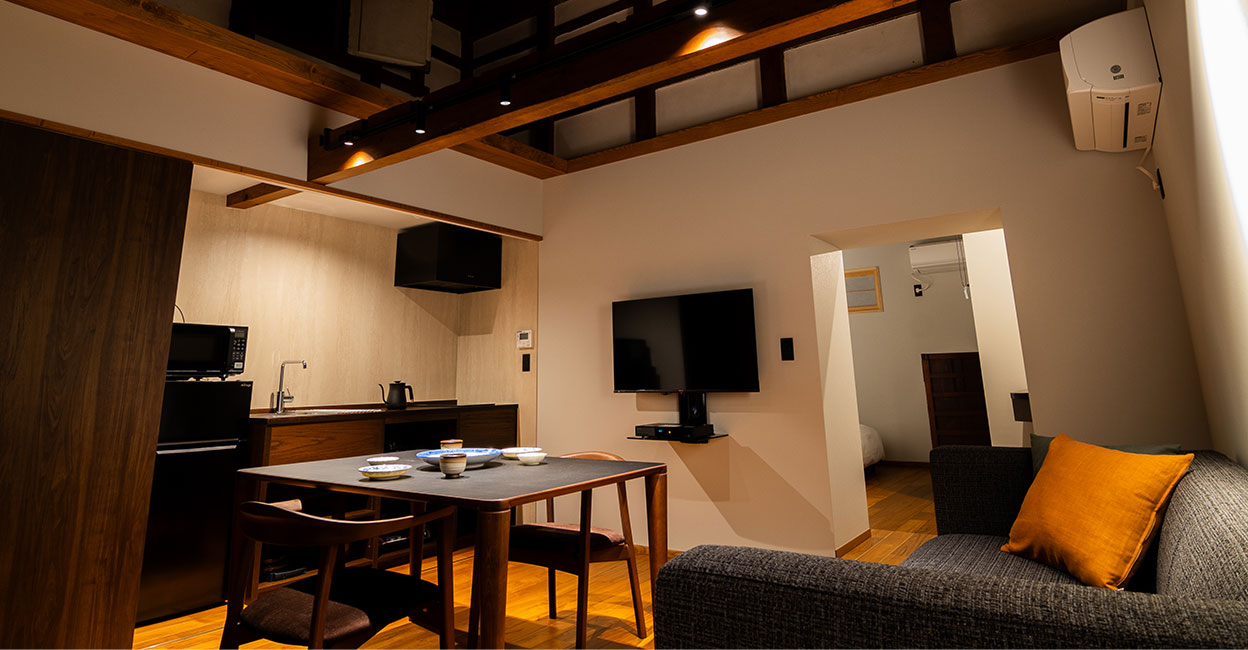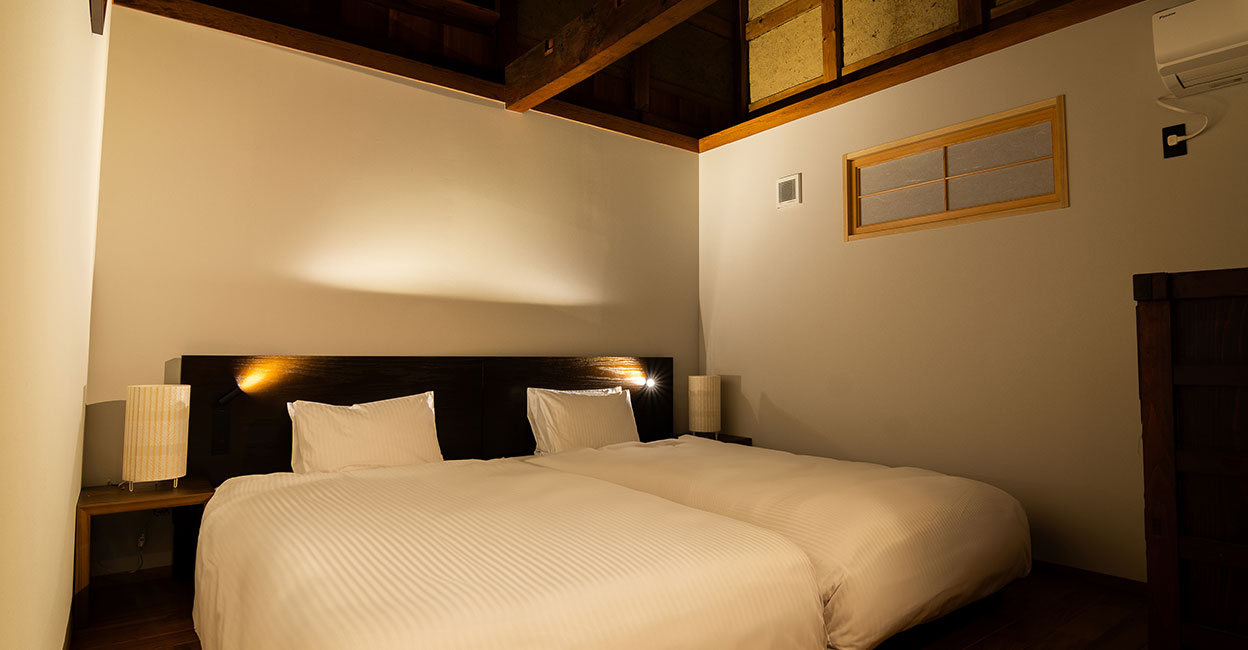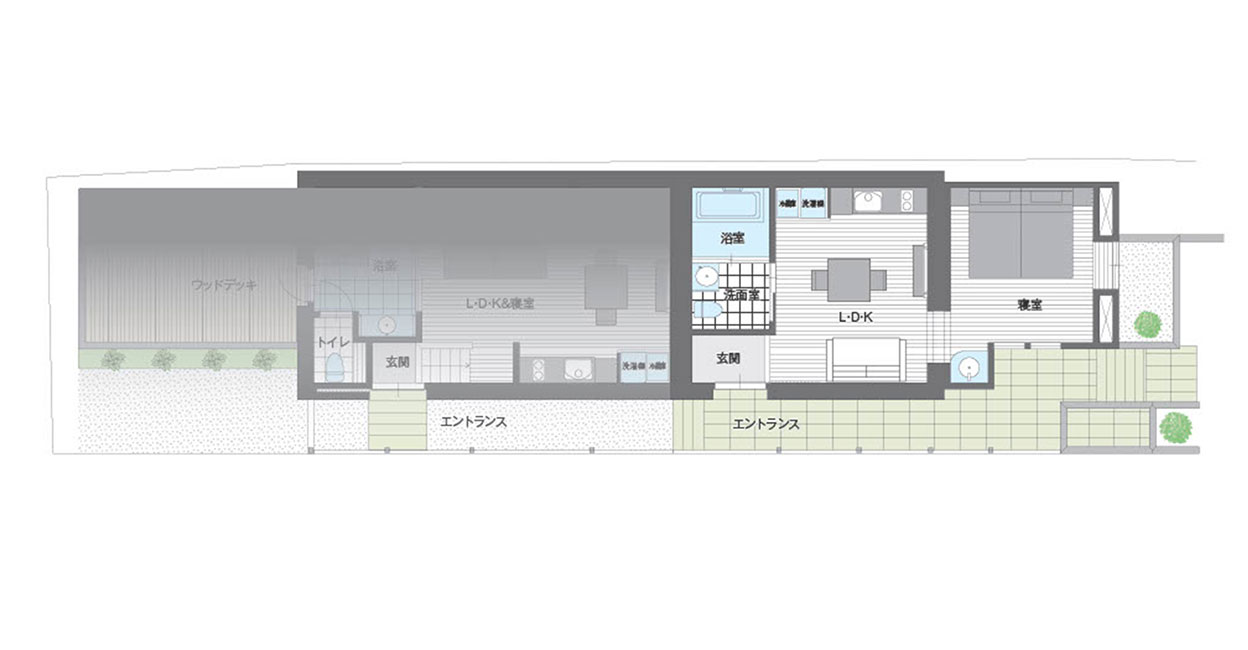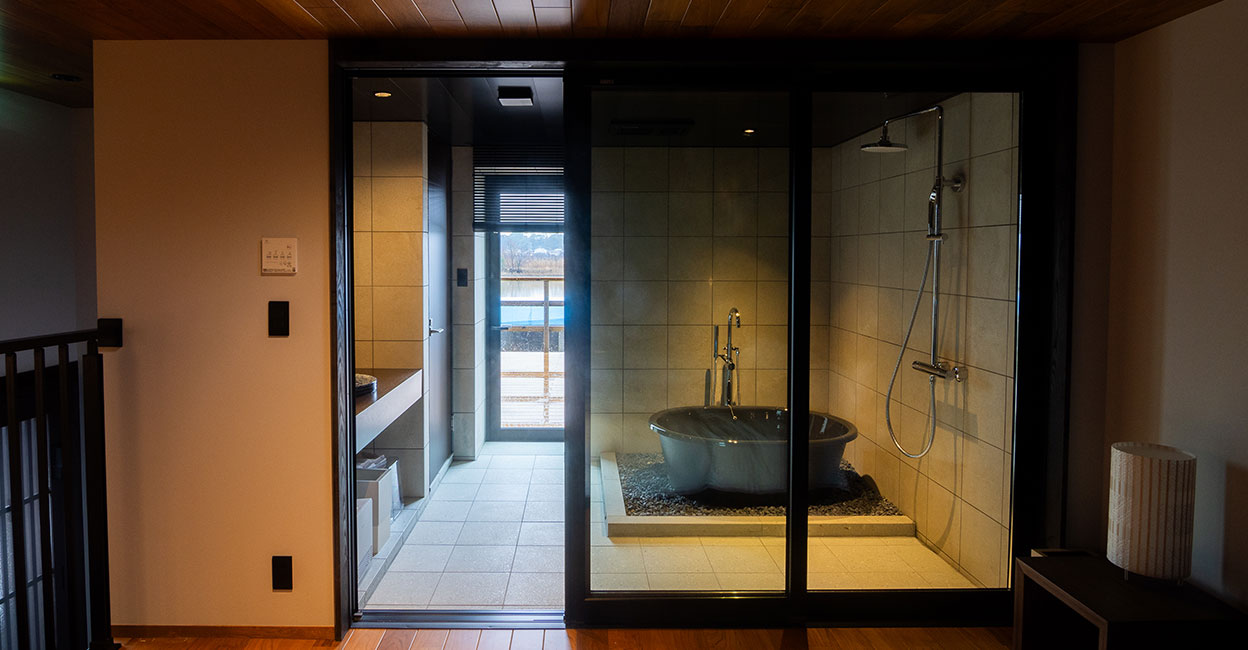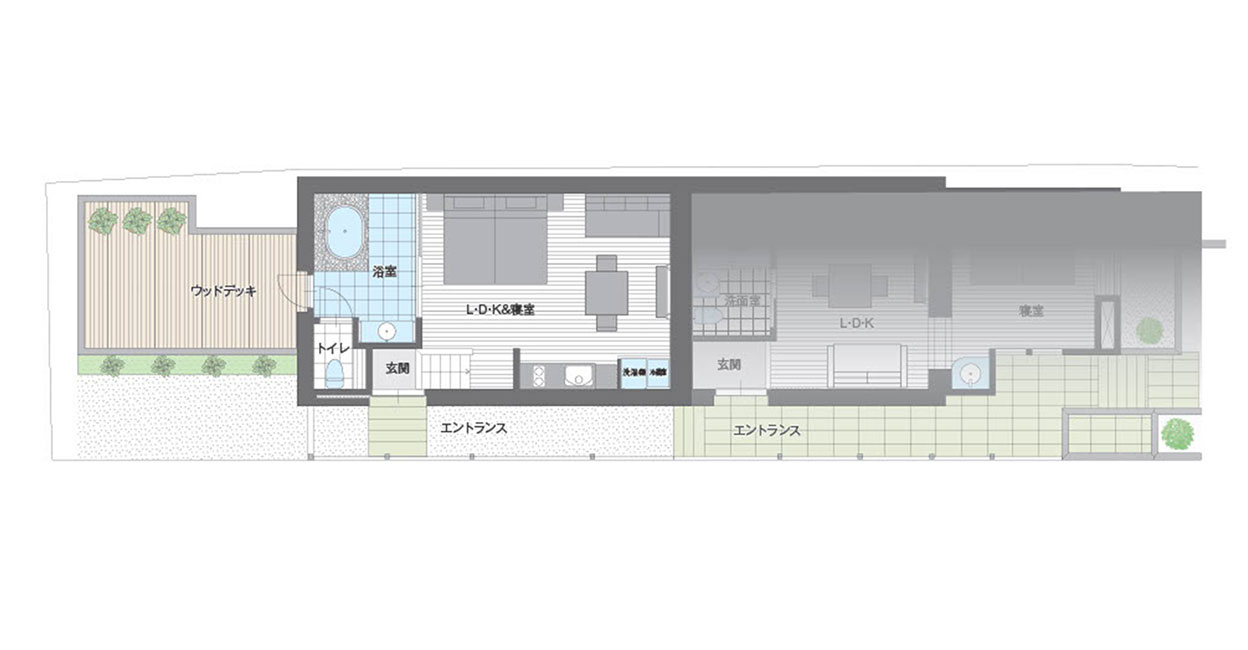Machiya guest room list
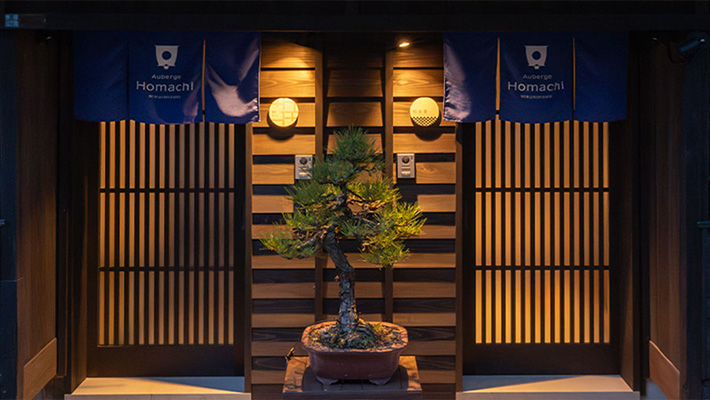
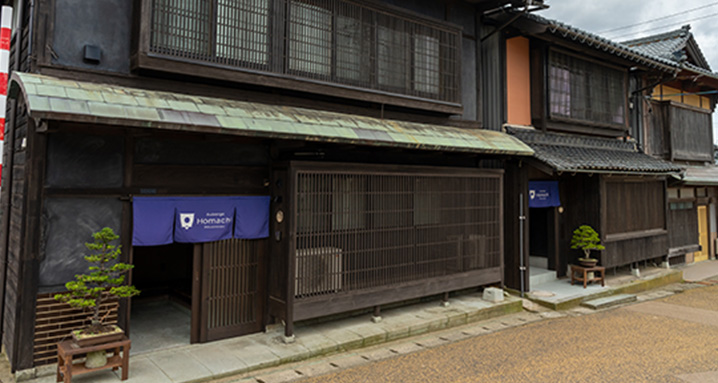
Hospitality from the historical townhouse in Mikuni, enjoy a rich experience and
a pleasant time.
We renovated the historic townhouse (Kagura-zukuri or traditional Japanese architectural style).
The exterior is purely Japanese-style structure, with features such as side walls and an entrance paved with
shakudani stones. Taking advantage of the pillars and beams that have remained since the Edo period,
It is built in a way that you can feel the atmosphere and climate of Mikuni and enjoy a special time
as if you are time slipped into the olden days
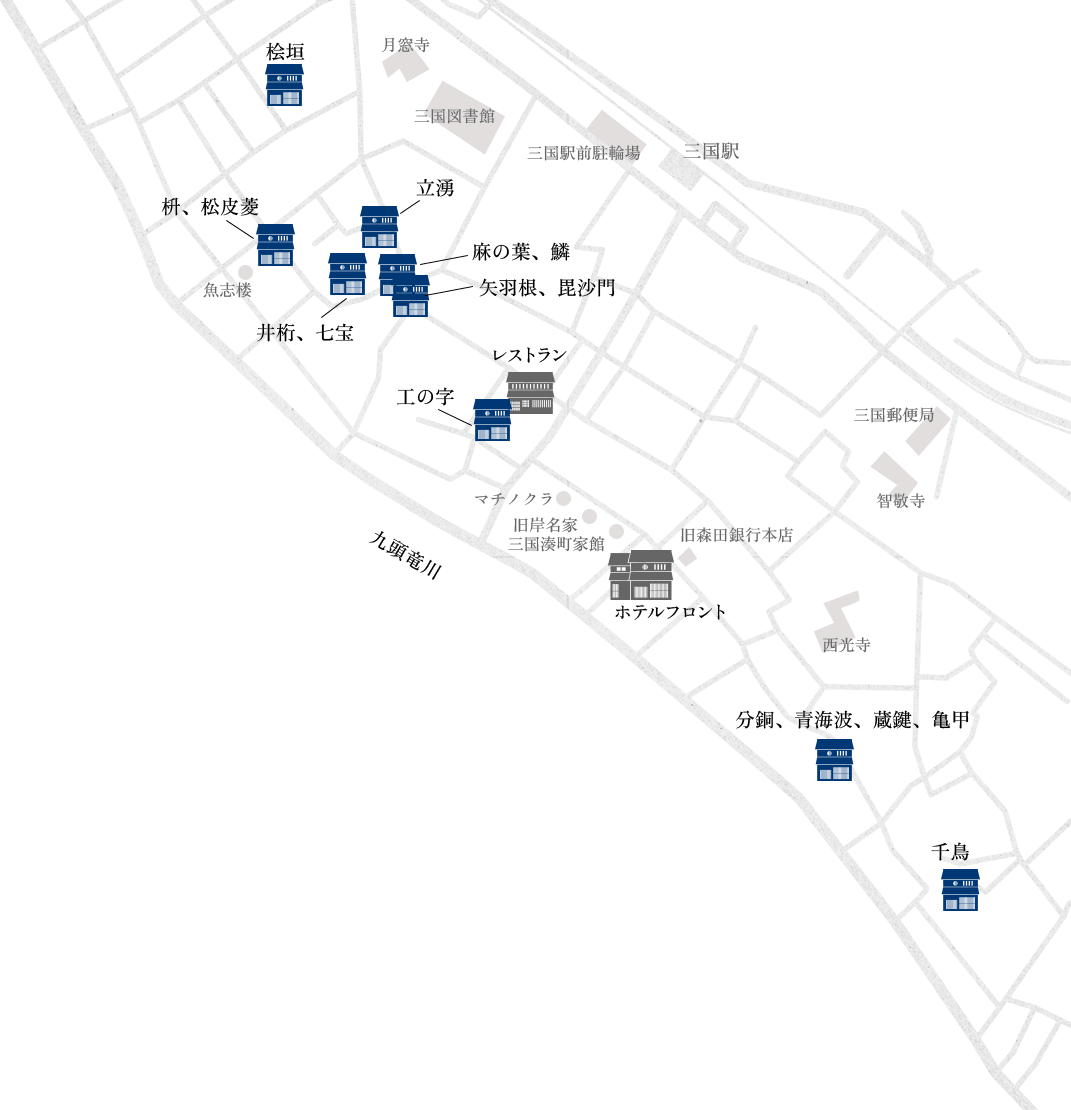
KONOJI
Theme: Literature
This guest room is close to Kinpo-ji Temple, where wealthy merchants held haiku gatherings during the booming Kitamae-bune trade. The name of the room, 工の字, is a pattern made up of consecutively connected characters for 工 (kou). It has the meaning of extending life and longevity, and the line running through the middle expresses a strong will that permeates the core. It is believed that the strong will of many of the merchants who built the prosperity of this area was due to their own strength of will.
| Address | 3-4-20 Kitahonmachi, Mikuni-cho, Sakai City, Fukui Prefecture (About 5 minutes walk from the front building) |
|---|---|
| Year of construction | Early Showa era |
| Total floor area | 89.26 square meters |
| Maximum capacity | 4 people |
| Remarks | If there are 4 people staying, we will provide 2 sets of futons in the Japanese-style room. |
HIGAKI
Theme: Crafts
The guest room's name, "Higaki," refers to a fence made of thin cypress planks woven diagonally, and the regular arrangement of these fences signifies good manners and courtesy. The theme of this guest room is "crafts," inspired by the image of everyday items such as strainers and baskets, which were carefully handcrafted by the many artisans in the area.
| Address | 2-3-10 Shinmei, Mikuni-cho, Sakai-shi, Fukui Prefecture (About 10 minutes walk from the front desk) |
|---|---|
| Year of construction | Early Showa era |
| Total floor area | 98.31 square meters |
| Maximum capacity | 4 people |
| Remarks | If there are 4 people staying, we will provide 2 sets of futons in the Japanese-style room. |
TATEWAKU
Theme: Bath
This is a distinctive townhouse with a design in which the bathhouse (bathroom) is separate from the courtyard. We tried to let as many of the fittings as possible to be left intact, allowing you to fully experience what life was like back then. The name of the room, "Riyu", represents the rising of steam and clouds, and also conveys the meaning of good fortune.
| Address | 3-1-19 Shinmei, Mikunicho, Sakai City, Fukui Prefecture (About 8 minutes walk from the front building) |
|---|---|
| Year of construction | 1955 |
| Total floor area | 90.36 square meters |
| Maximum capacity | 2 people |
BISHAMON / YABANE
-
BishamonBISHAMON
Theme: Martial arts
The room name, Bishamon, is inspired by the protective shell of a turtle. The turtle shell pattern represents health, longevity and protection from evil, and a variation of this design is featured on the armor of Bishamonten, the war god of wealth and fortune.Address 3-5-48 Shinmei, Mikuni-cho, Sakai City, Fukui Prefecture
(About 7 minutes walk from the front building)Year of construction Early Showa era Total floor area 86.81 square meters Maximum capacity 4 people Remarks If there are 4 people staying, we will provide 2 sets of futons in the Japanese-style room. -
YABANE
Theme: Martial arts
The small roof from the time of the residence remains, and the latticed bay windows and the garden with its large stone tsukubai (bamboo basin) and lanterns make this a very large townhouse. The guest room name [Yabane] is inspired by the bow and arrow used in the rituals of Oshima Shrine. The feather pattern has the meaning of exorcising evil and hitting the target.Address 3-5-48 Shinmei, Mikuni-cho, Sakai City, Fukui Prefecture
(About 7 minutes walk from the front building)Year of construction Early Showa era Total floor area 71.23 square meters Maximum capacity 2 people
CHIDORI
Theme: Festivals
The Mikuni Festival, one of the three major festivals in the Hokuriku region, is an ancient ritual at Mikuni Shrine. These rooms are the closest to Mikuni Shrine, and the view of the floats from the second-floor rooms is spectacular. The name of the room, Chidori, comes from the Japanese word for plover, meaning "one thousand blessings." In addition, Nami Chidori, which depicts a plover flying over the sea, also represents marital harmony and household safety as they overcome the rough waves of the world. The rooms retain the traditional "kagura-tate" architectural style of Mikuni Minato, and Shakudani stone is reused in the garden.
| Address | 4-11-6 Minamihonmachi, Mikuni-cho, Sakai City, Fukui Prefecture (About 7 minutes walk from the front building) |
|---|---|
| Year of construction | 1848 |
| Total floor area | 69.89 square meters |
| Maximum capacity | 2 people |
MASU / MATSUKAWABISHI
-
MASU
Theme: Ryotei
This building was built in the early Meiji period and was a ryotei (traditional Japanese restaurant) frequented by many literati at the time. The guest rooms were named to evoke the idea of ryotei (traditional Japanese restaurant), banquet, and sake masu (a sake box). It is said that the masu, a measuring instrument, was considered auspicious and came to be used as a sake vessel because it sounds the same as the Japanese words for "increase" and "profit."Address 3-7-34 Shinmei, Mikuni-cho, Sakai City, Fukui Prefecture
(About 9 minutes walk from the front building)Year of construction Early Meiji period Total floor area 71.86 square meters Maximum capacity 2 people -
MATSUKAWABISHI
Theme: Ryotei
This building was built in the early Meiji period and was a Japanese restaurant frequented by many literati at the time. The pine tree in the guest room's name, "Matsukawabishi," was planted in Mikuni, which is close to the sea, to protect against wind and sand. As it always stays green, it is considered to be an auspicious tree representing "longevity and prolonged life," and the matsukawabishi, which is modeled after the bark, is said to have the power to ward off evil.Address 3-7-34 Shinmei, Mikuni-cho, Sakai City, Fukui Prefecture
(About 9 minutes walk from the front building)Year of construction Early Meiji period Total floor area 65.02 square meters Maximum capacity 2 people
IGETA /SHIPPO
-
IGETA IGETA
Theme: Japanese sweets
The name of the room, Igeta, is based on the pattern of the character for "well," symbolizing the wooden frame around the edge of a well. As the pattern is related to water, which is essential for making sweets, it represents the protection of wells, which are essential to life, and is imbued with the meaning of safety for the home.Address 3-4-5 Shinmei, Mikunicho, Sakai City, Fukui Prefecture
(About 9 minutes walk from the front building)Year of construction Late Meiji period Total floor area 56.52 square meters Maximum capacity 2 people -
SHIPPO
Theme: Japanese sweets
The room name "Shippo" is a Buddhist term referring to the seven treasures of "gold, silver, crystal, lapis lazuli, agate, coral, and mantis shrimp." The pattern of circles of the same size connected forever represents the wish for continued harmony and prosperity. Sweets, which were once precious, are likened to treasures.Address 3-4-5 Shinmei, Mikunicho, Sakai City, Fukui Prefecture
(About 9 minutes walk from the front building)Year of construction Late Meiji period Total floor area 66.61 square meters Maximum capacity 2 people
ASANOHA / UROKO
-
ASANOHA
Theme: Kimono
The name of the room, "Asanoha" (hemp leaf), is a symbol of a child's healthy growth, as it grows quickly and straight. The strong fibers of hemp are used in Shinto ritual implements such as shimenawa (sacred rope) and haraiku (purification wand), and are believed to ward off evil, so it has long been a popular pattern for baby clothes.Address 3-5-47 Shinmei, Mikunicho, Sakai City, Fukui Prefecture
(About 8 minutes walk from the front building)Year of construction Early Showa era Total floor area 69.91 square meters Maximum capacity 2 people -
Scale UROKO
Theme: Kimono
The pattern of the room name, "Uroko" (scale), has the meaning of "warding off evil spirits" because it resembles the scales that protect the body of living creatures, and also has the meaning of "regeneration" because snakes have scales and repeatedly shed their skin. The image of the scales that protect the body is likened to the kimono that people in the town of Mikuni competed with each other for their aesthetic sense.Address 3-5-47 Shinmei, Mikunicho, Sakai City, Fukui Prefecture
(About 8 minutes walk from the front building)Year of construction Early Showa era Total floor area 55.97 square meters Maximum capacity 2 people
BUNDO / SEIGAIHA /
KUROKAN /Kikko KIKKO
-
BUNDO
Theme: Japanese architecture
The townhouses and storehouses on the grounds are examples of the architectural style from the Edo to Taisho periods. The guest room's name, "Bundo" (weight), is said to have been a lucky charm that brought prosperity to business and good fortune, as powerful figures such as Hideyoshi and Ieyasu had gold and silver cast into the shape of large weights and saved them. The name was chosen to evoke the image of wealthy merchants who made their fortunes through trade with the Kitamae ships.Address 3-6-66 Minamihonmachi, Mikuni-cho, Sakai City, Fukui Prefecture
(About 5 minutes walk from the front building)Year of construction Early 1800s Total floor area 33.85 square meters Maximum capacity 2 people -
SEIGAIHA
Theme: Japanese architecture
The townhouses and storehouses on the premises are architectural styles from the Edo to Taisho periods. The name of the guest room, "Seigaiha," represents the blessings of the vast ocean and the infinitely spreading wave pattern. It is imbued with wishes for happiness and a peaceful life that will continue into the future.Address 3-6-66 Minamihonmachi, Mikuni-cho, Sakai City, Fukui Prefecture
(About 5 minutes walk from the front building)Year of construction Early 1800s Total floor area 48.47 square meters Maximum capacity 2 people -
KUROKAN
Theme: Japanese architecture
The townhouses and storehouses on the premises are examples of the architectural style from the Edo to Taisho periods. The name of the guest room, "Kura Kagi," is a motif inspired by the storehouse that protects valuables and the key that opens the door. Mikuni was a merchant town and many storehouse buildings still remain. The name comes from the fact that the guest rooms are renovated storehouses.Address 3-6-66 Minamihonmachi, Mikuni-cho, Sakai City, Fukui Prefecture
(About 5 minutes walk from the front building)Year of construction Meiji 34 Total floor area 41.67 square meters Maximum capacity 2 people -
KIKKO
Theme: Japanese architecture
The tortoise shell pattern represents longevity, health and protection from evil, as the tortoise's shell is strong and protective. It is imbued with the hope that the sturdy building that has endured the long years of wind and snow will continue to stand for a long time to come.Address 3-6-66 Minamihonmachi, Mikuni-cho, Sakai City, Fukui Prefecture
(About 5 minutes walk from the front building)Year of construction Taisho 9th year Total floor area 39.76 square meters Maximum capacity 2 people
